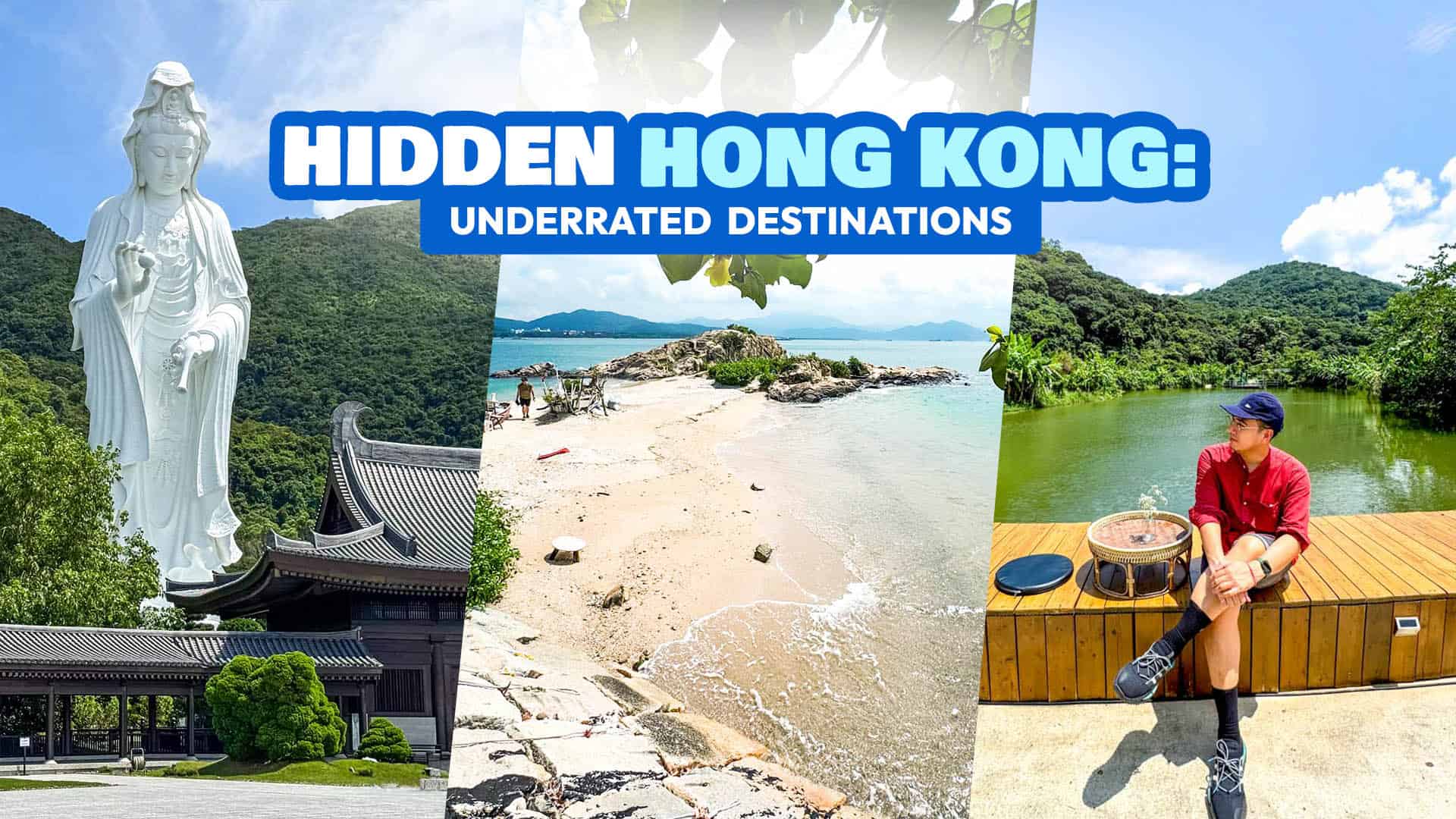You think you’ve seen all of Hong Kong? Think again. On the world map, Hong Kong appears as a teensy, tiny dot, but what most tourists get to see barely scratches the surface.
We often imagine Hong Kong as a bustling urban jungle with Disneyland and the Big Buddha on its outskirts. But in reality, its full borders go way beyond the usual tourist map. It covers over 1,100 square kilometers — comparable in size to the entire Rizal Province — including the peninsula and the various islands off its coast. It is divided into three main regions: Hong Kong Island, Kowloon, and the New Territories. [ READ: WHERE TO STAY IN HONG KONG ✅ ]
Tourists mostly flock around the same sites. The ever restless Central, Tsim Sha Tsui, Mong Kok and its popular theme parks are surrounded by a unique brand of freneticism. But if you take the time to pay attention to its often overlooked nooks and its more distant crannies, you’ll find that an unusually quiet Hong Kong awaits more curious travelers. Recently, the Hong Kong Tourism Board showed us around the lesser-known sides, and in this article we’ll share them all with you.
1. Tsz Shan Monastery
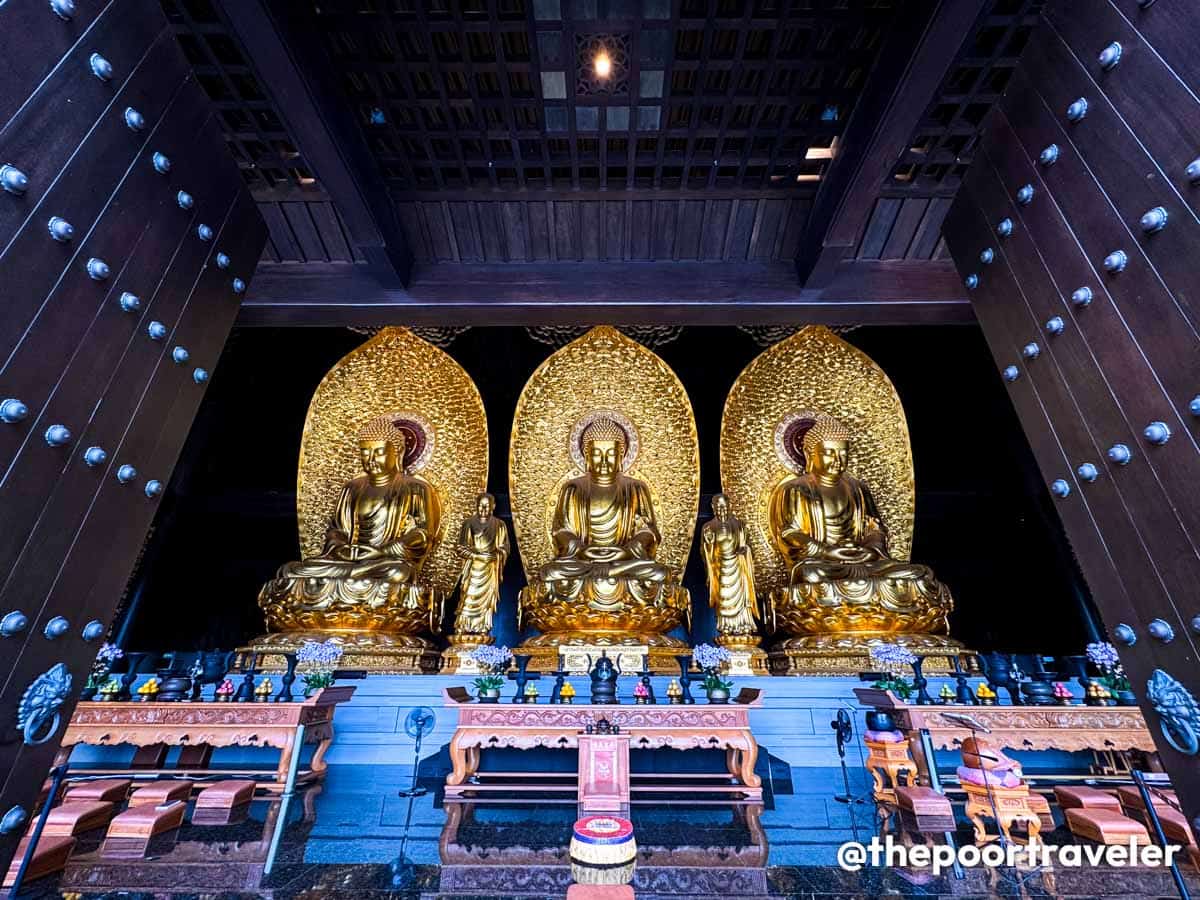
While the Tian Tan Buddha often graces Hong Kong’s postcards, another gigantic structure of a Buddhist divinity can be found in the city’s Tai Po district. Here at the Tsz Shan Monastery, all eyes are on the 76-meter tall statue of Guan Yin, one of the most revered deities in Buddhism. Like the Big Buddha, it is made of bronze but this one is coated in stunningly white fluorocarbon self-cleaning paint.
The colossal Guan Yin clutches a vase in her left hand, symbolizing purification, and a pearl in the other, representing wisdom. It stands on a three-tier lotus flower, crowning the Buddhist Art Museum, which showcases an impressive collection of Buddhist images, relics, and other artifacts.
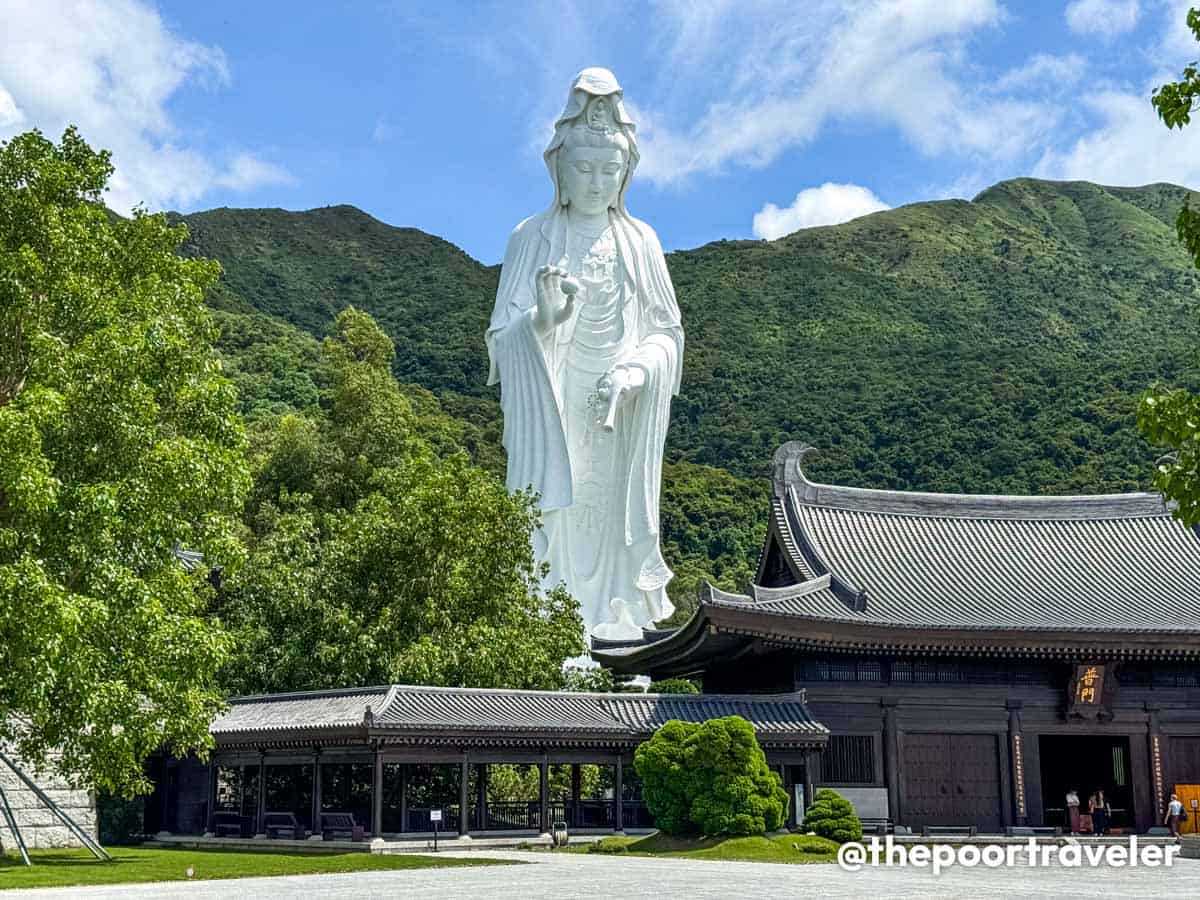
The monastery was officially opened in 2015 as a sanctuary that offers spaces for tranquility, meditation, and spiritual purification. Hence, the number of visitors allowed is limited to only 400 per day. Advance registration is required, and it can be done online by visiting this page.
TSZ SHAN MONASTERY
Address: 88 Universal Gate Road, Tai Po, New Territories, Hong Kong
How to get to Tsz Shan Monastery: Take the MTR East Rail Line to Tai Po Market Station. Then, take Bus 75K bound for Tai Mei Tuk. Alight at San Tau Kok stop. Fare: HK$6.40. Walk for 10 minutes along Tong Tsz Road until you reach Universal Gate Road. Turn right and walk for 20 minutes.
Operating Hours: 9:30am – 5:00pm
Entrance Fee: FREE
2. Sha Tau Kok
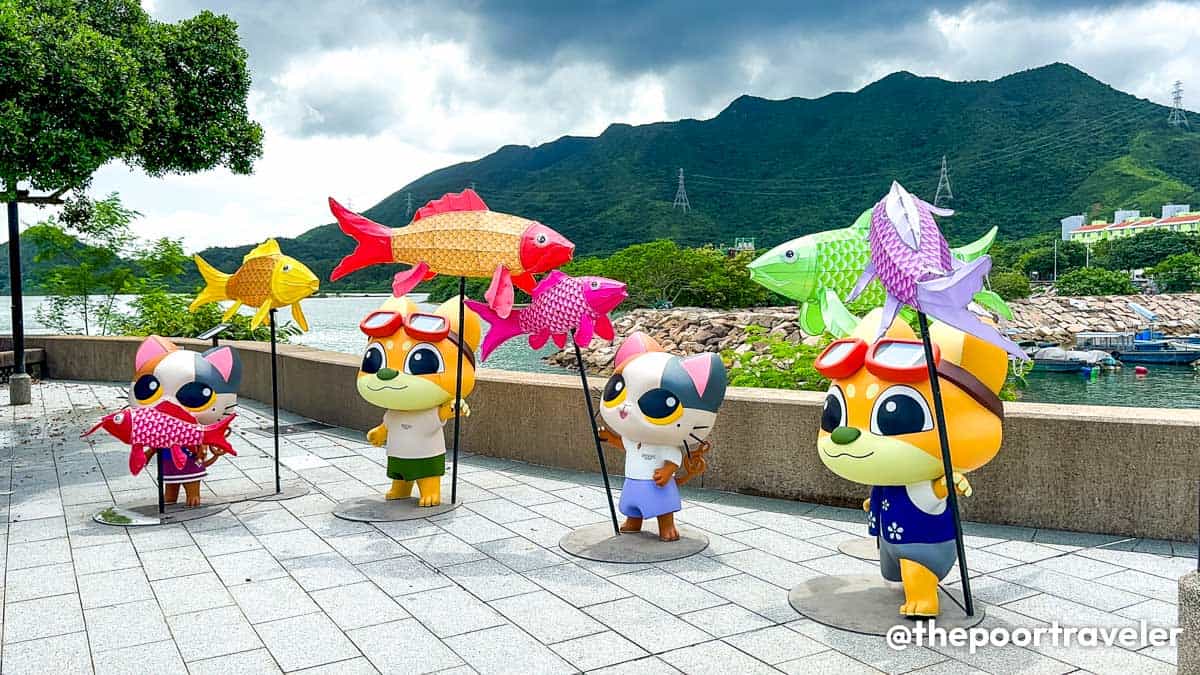
Of all the towns within Hong Kong, Shau Tau Kok is perhaps the most curious. For many outsiders, it is almost unheard of. It is the territory’s northernmost settlement. And it is a closed town.
Wait, what? A “closed” town? What does it mean?
Located just south of the boundary with Shenzhen, Shau Tau Kok is within a regulated border zone called Frontier Closed Area. According to the South China Morning Post, it was closed off by the British colonial government in the 1950s in an effort to combat smuggling, espionage, and illegal immigration.
It is the last remaining major town in the zone, and is accessible only to local residents and those with the proper permit. Hence, unsurprisingly, only a limited number of tourists get to see and step into it, and they are allowed to stay in the area from 7:00 AM to 9:00 PM only.
But what’s in Sha Tau Kok?
Novelty, mostly. Don’t expect exciting theme parks, giant shopping malls or vibrant food markets. What’s waiting for you here:
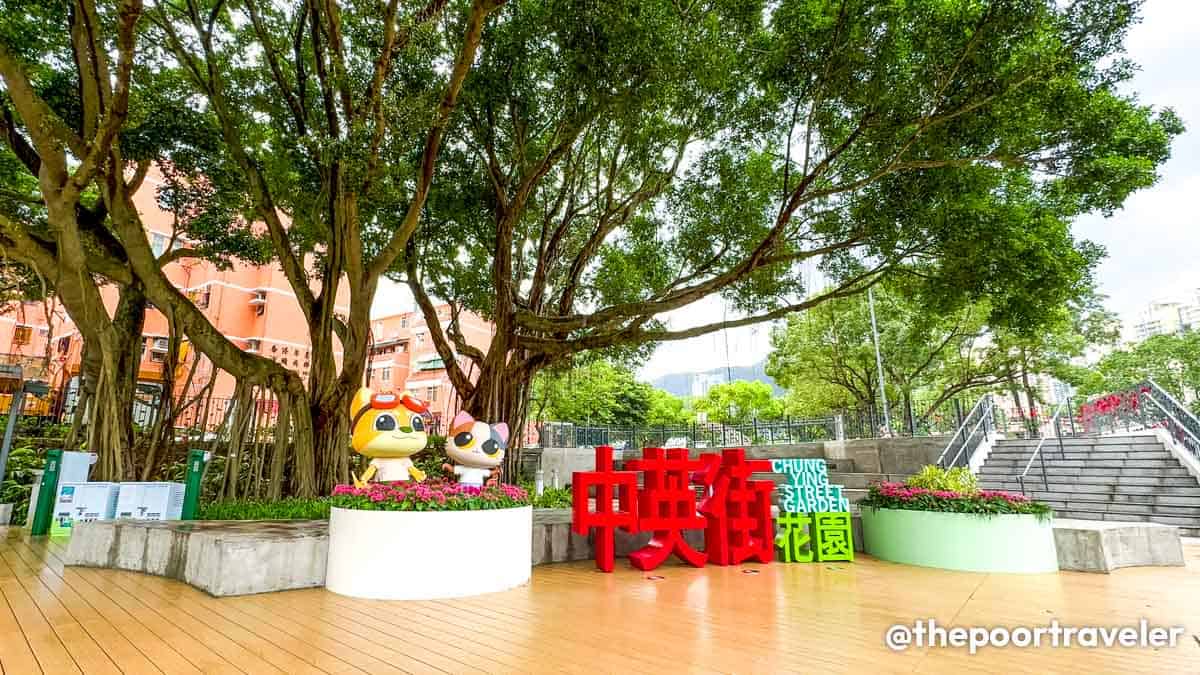
- Sun Moon Pavilion, a simple bayside nook where you could spend a quiet morning.
- Fish Lantern Square, where mascots Enggue Pup and Arttie Kitty stand, symbolizing the Sha Tau Kok fish lantern dance, which has been traditionally performed for over 300 years and has been declared a national intangible heritage.
- Chung Ying Street, which straddles the border with Shenzhen. One part of it is in Hong Kong while the other in mainland China. A garden next to it if often a tour stop, as it is a good spot to watch the street.
- Murals are all around town — on the walls, in the corners, on the ground — depicting mostly festivals and characters.
- Salmon House, built in 1988 as relocation for many indigenous residents.
- Shau Tau Kok Pier, the longest pier in Hong Kong, spanning 280 meters. It was constructed in the 1960s. It is also the gateway to Lai Chi Wo, which I will be discussing in the next section.
To manage your expectations: None of these are particularly exhilarating, overwhelming or dramatic. But altogether, they represent a side of Hong Kong that one could say is often overlooked, almost forgotten, and near isolated, away from the chaos of downtown. They also lend a cultural look into closed border towns that many people get to see.
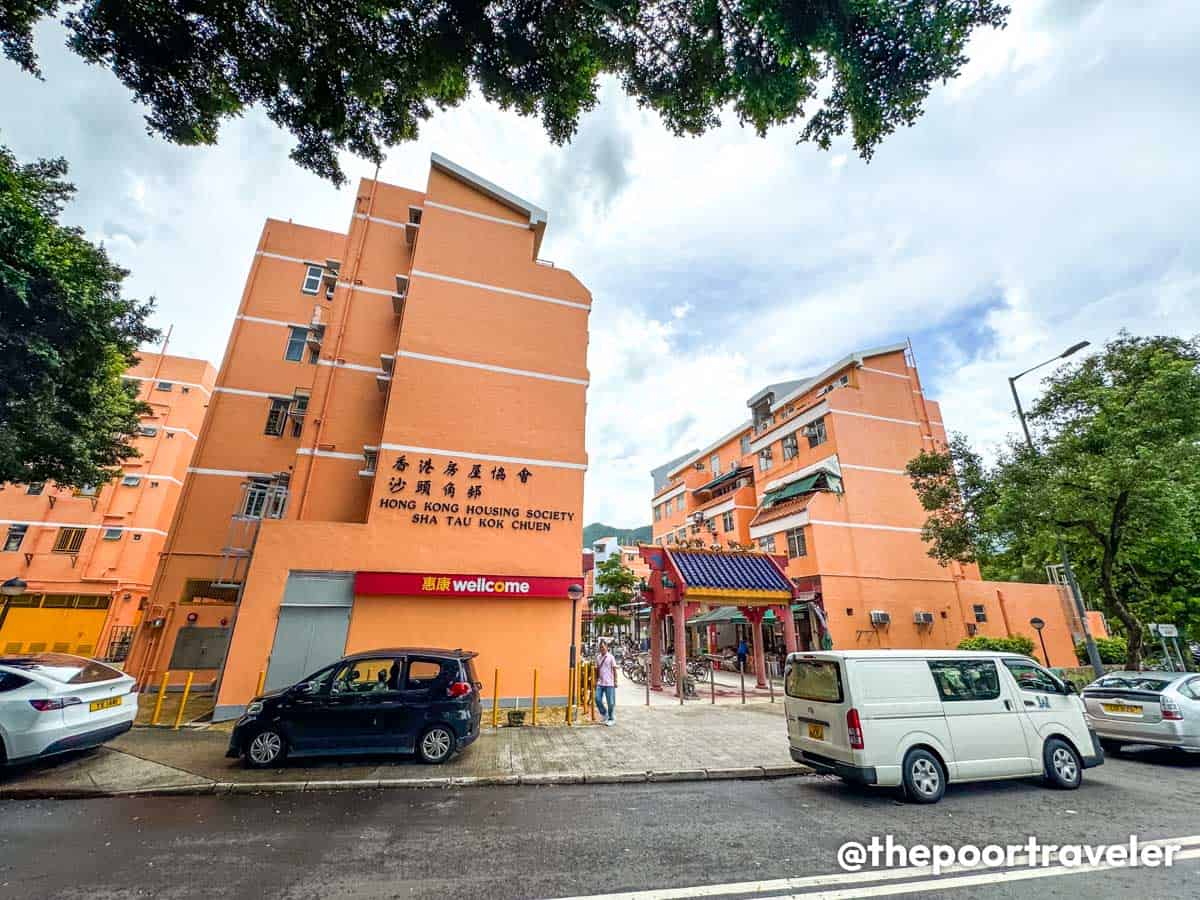
Sha Tau Kok is open to visitors but only if they have a Tourism Closed Area Permit, which is FREE of charge. You can apply for one online on Hong Kong Police Force’s official website at least three working days before your intended arrival. The online application system opens at the start of each month for visits scheduled in the following month. (For example, slots for February visits are made available starting January 1.) It’s on a first come, first served basis.
3. Lai Chi Wo
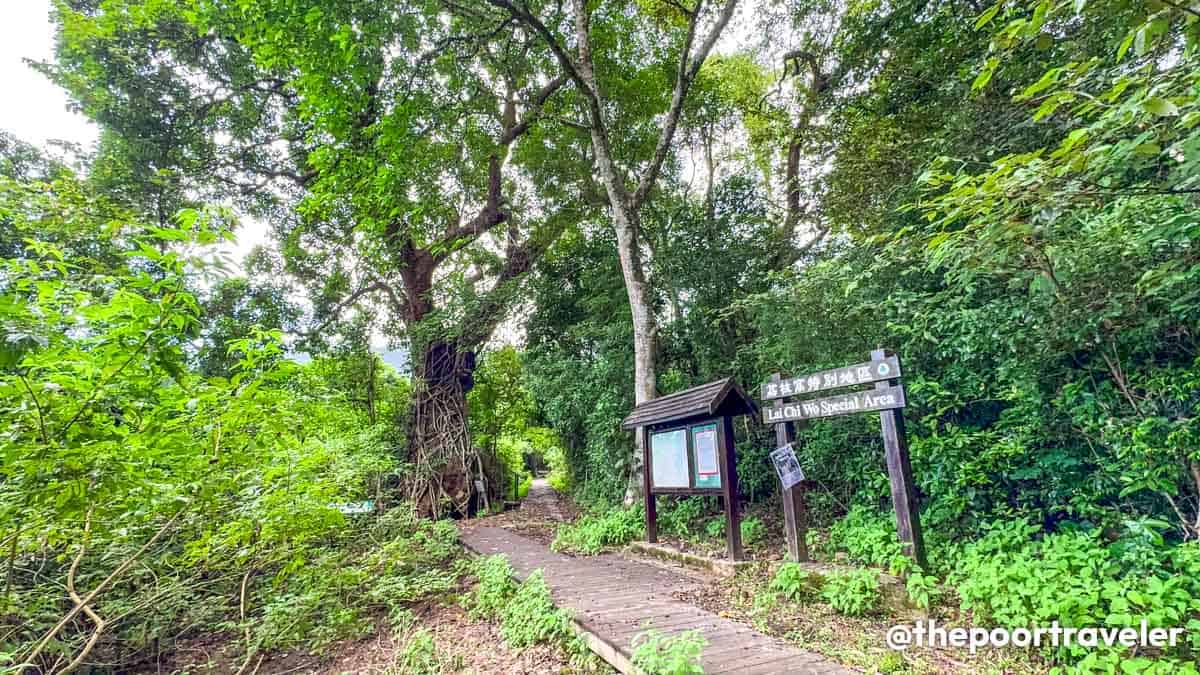
Established around 400 years ago, Lai Chi Wo is one of the oldest but best preserved Hakka settlements in Hong Kong. At one point in its history, the village’s prosperity started to decline, so the feng shui masters recommended constructing walls around it to keep good fortune in and bad fortune out. Today, this walled village encircles over 200 houses neatly arranged in rows.
Because of its remote location, much of the rural settlement has not changed, as though it’s been frozen in time. Just outside its walls, the Hok Shan Monastery and Hip Tin Temple remain standing.
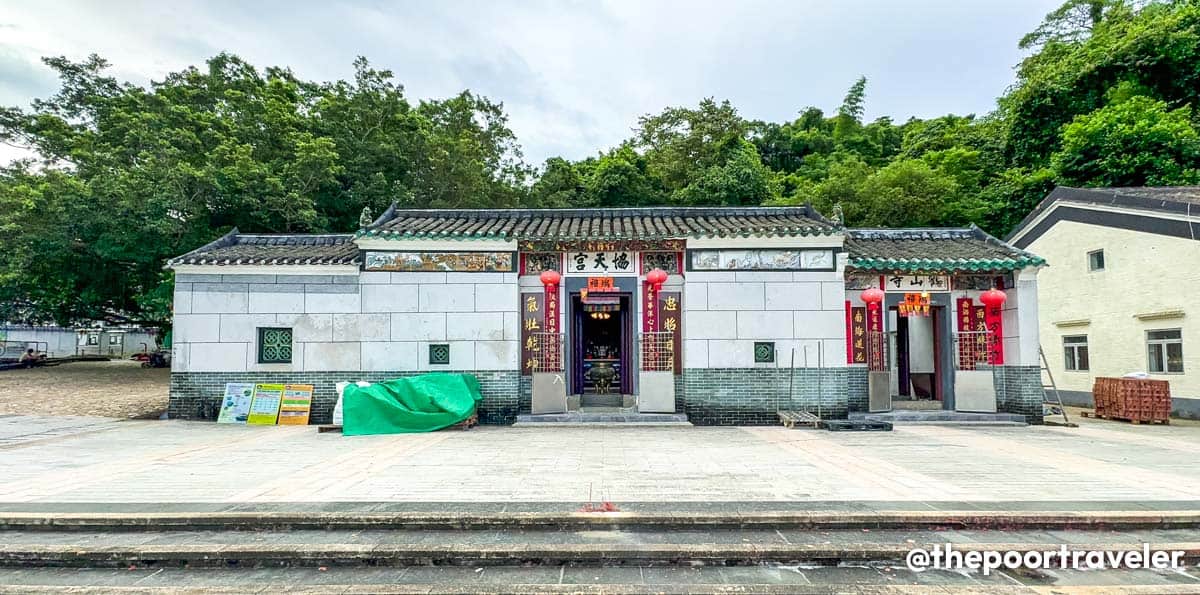
You can go inside the village and walk down its centuries-old alleys, follow the Lai Chi Wo Nature Trail and admire the mangroves surrounding it. You can also just explore and get wrapped in its old-world charm or join a guided tour to learn more about Hakka history and culture.
In 2020, the village was awarded a UNESCO Special Recognition for Sustainable Development for promoting cultural conservation. It’s also part of the Hong Kong UNESCO Global Geopark.
HOW TO GET TO LAI CHI WO:
From Downtown Hong Kong: Catch a train on the MTR East Rail Line to University Station and take Exit B. Hop onto Bus 272K and alight at Ma Lui Shui Pier, the first stop. Travel on foot for 100 meters to Ma Liu Shui Landing No. 3 and board the kaito ferry bound for Lai Chi Wo. Alternatively, you can also just walk straight from the MTR University Station to the pier to catch the same ferry, which should take roughly 12 minutes. Kaito ferries are available on Saturdays and Sundays. Ferry travel time: 1.5 hours.
From Sha Tau Kok: If you’re visiting Sha Tau Kok and Lai Chi Wo on the same day trip, you can board a ferry from Sha Tau Kok Public Pier straight to Lai Chi Wo. Ferries from here are available daily. Travel time: 30 minutes. Note that a Closed Area Permit is required to access Sha Tau Kok and its pier.
4. Peng Chau
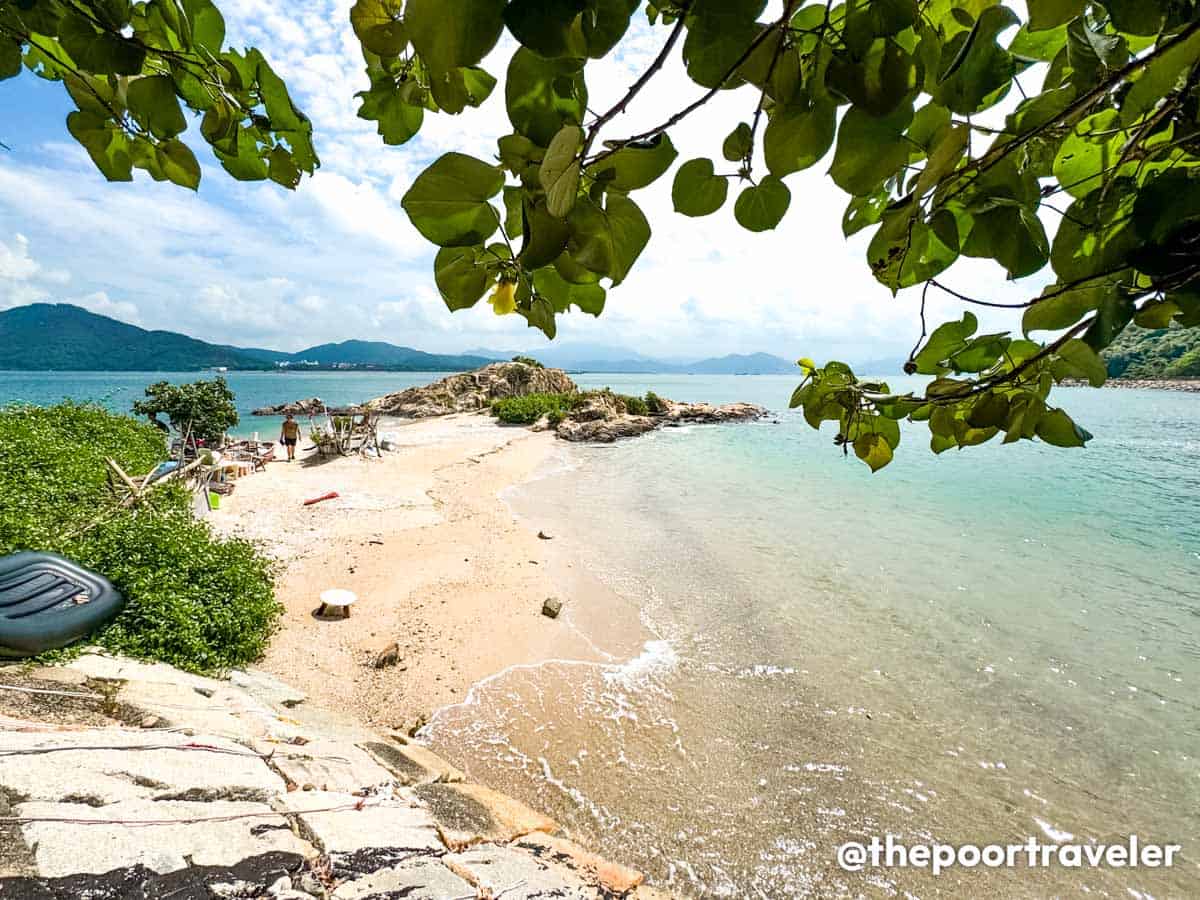
Aside from the peninsula, Hong Kong also covers several outlying islands off its coast. One of them is Peng Chau or “flat island”.
Peng Chau is quite small, spanning only 1 square kilometer. But some of its main attractions include:
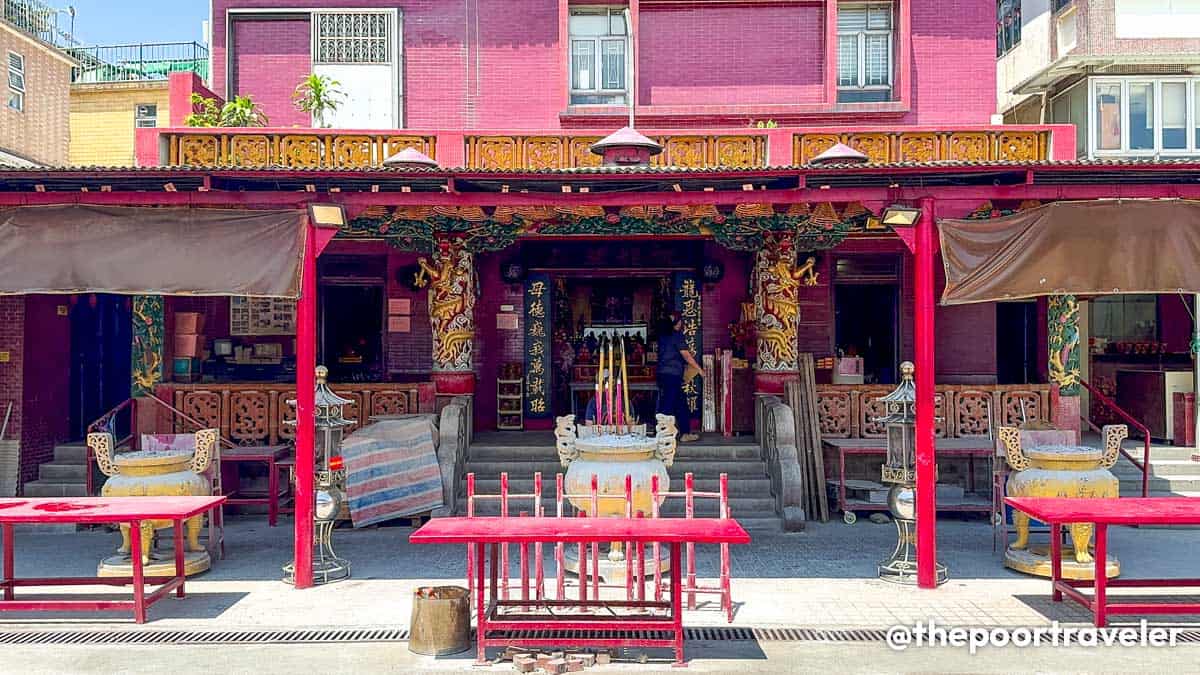
- Lung Mo Temple, dedicated to the Chinese goddess of water, who is revered by local residents.
- Tai Lei, a small island connected to Peng Chau by a bridge with a jagged offshoot called “Turtle Rock” and a sandy mini-beach.
- Tung Wan Beach, a long sandy stretch close to the temple.
- Fook Yuen Leather Factory, the island’s most visited attraction, thanks to the heritage building that houses it and its history. It’s no longer functioning as a workshop but an creative “secret garden” which features various installations and graffiti.
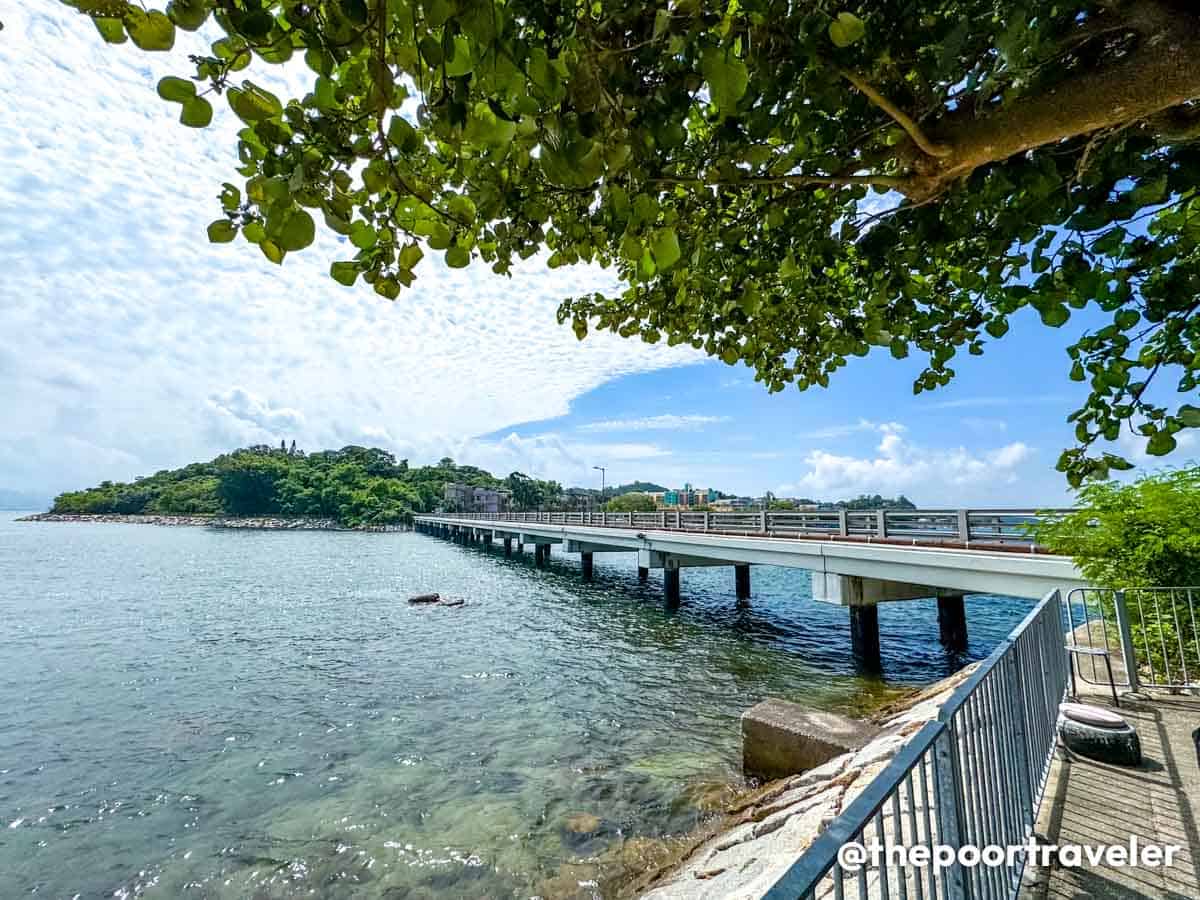
If you’ve seen the film Under Parallel Skies, starring Janella Salvador and Metawin Opas-iamkajorn, you’ll probably find some of its key attractions familiar like the Peng Chau Bridge and a small Asian ingredient store.
How to get to Peng Chau: From the MTR Hong Kong Station, make your way to Central Pier No. 6. Catch a ferry to Peng Chau. Travel time is 30-40 minutes.
5. Mui Wo
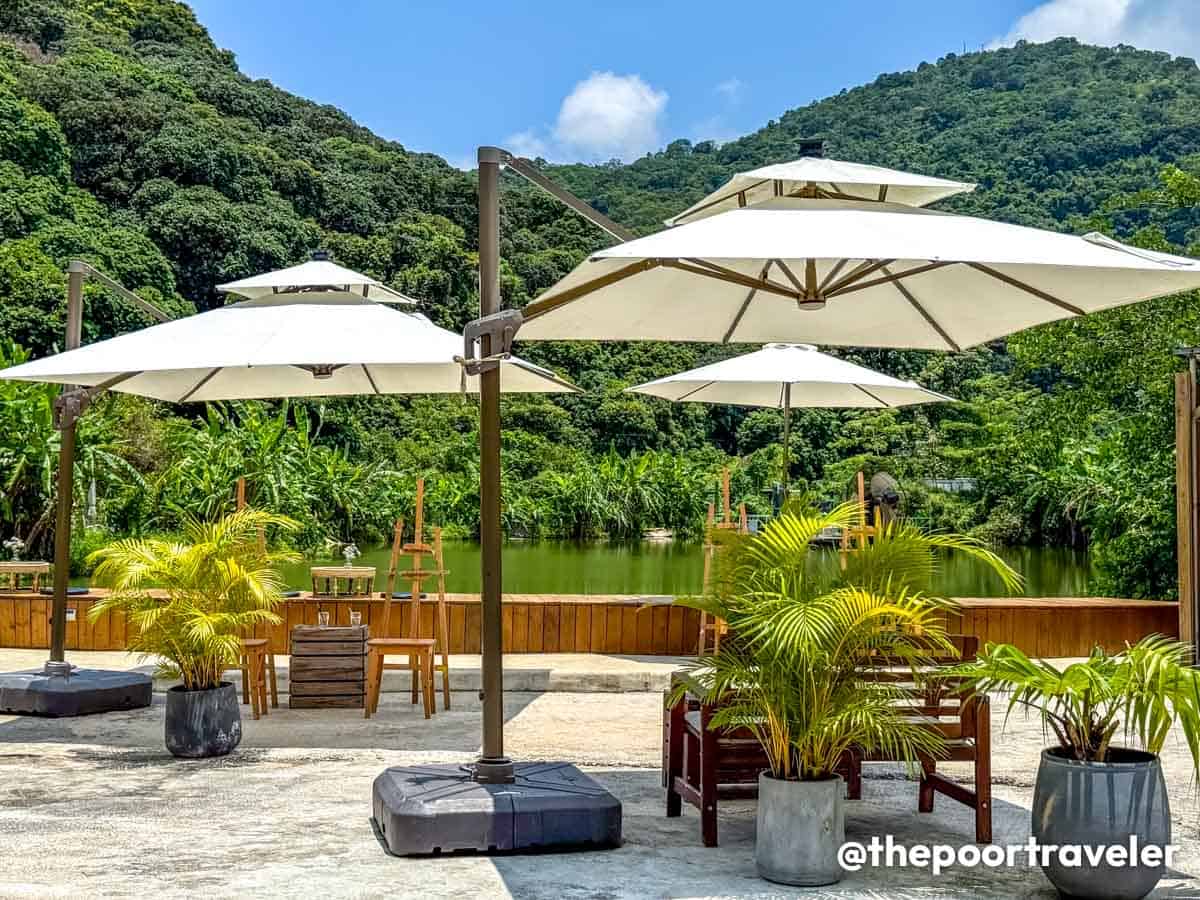
Among tourists, Lantau Island is best known for Disneyland, the Big Buddha, and perhaps Tai-O Village. But there’s another seaside village along its coast that is worthy of attention — Mui Wo.
Mui Wo was once known for its silver mines, which is why many of its key points of interest bear the word “silver” in its name — Silver Mine Bay Beach, Silver Mine Waterfall, and Silver River. But today, its biggest treasures are its calm atmosphere and precious waterfront views.
It’s also home to Hideout, a unique and stylish restaurant-slash-art-space-slash-retreat that also supports local communities. That’s a lot of roles for a single establishment, but it’s something that Hideout strives to do all at once. They offer a place of relaxation to travelers, nourishing food and drinks that stick to farm-to-table ideals, and wellness activities with little to no impact on the environment.
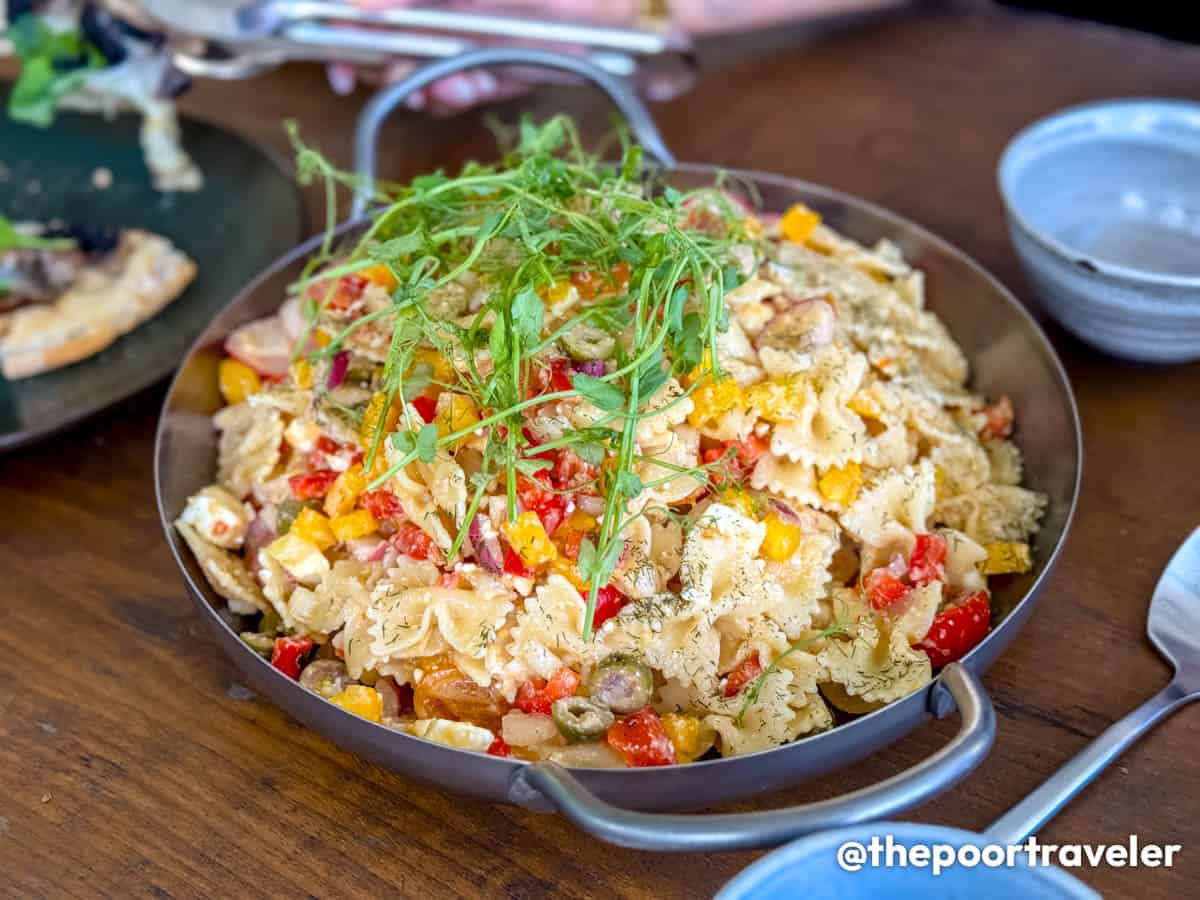
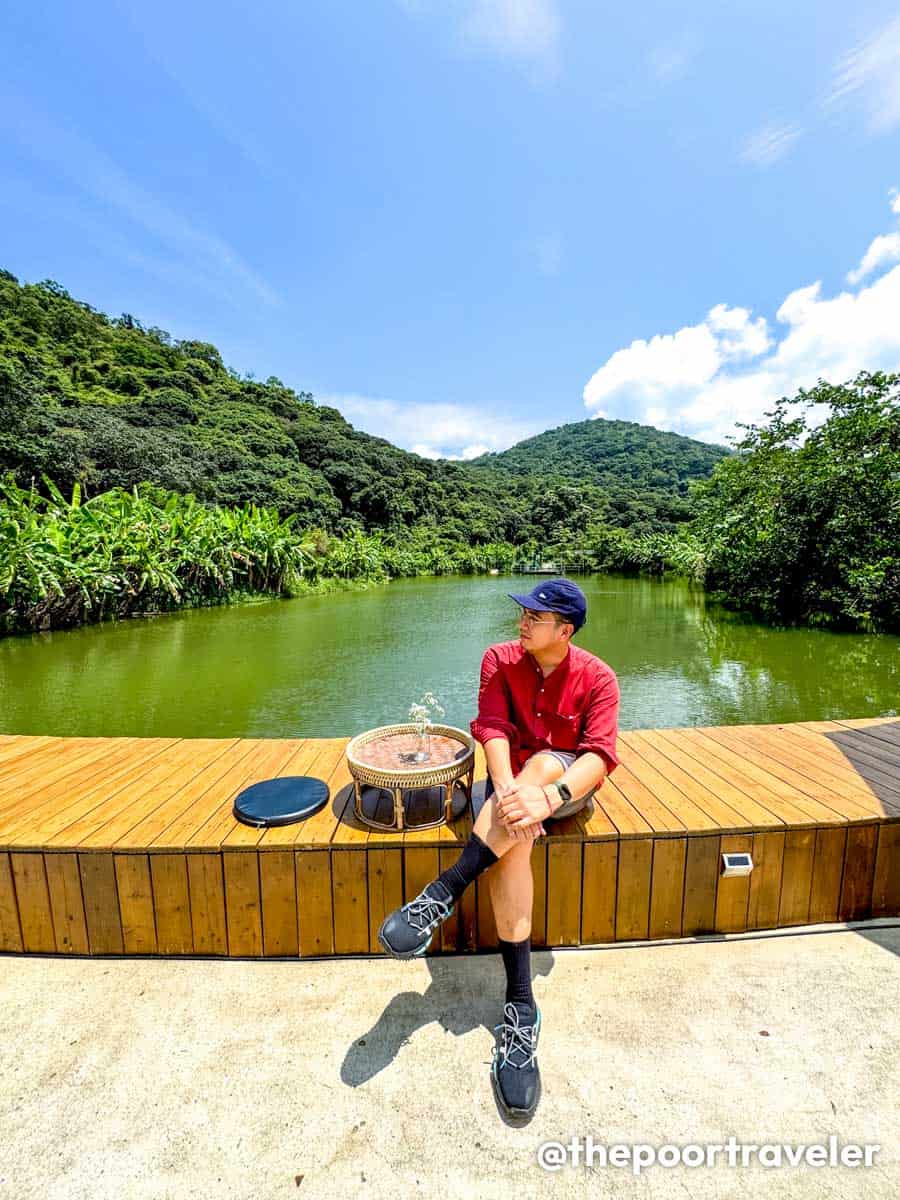
You can also join art workshops, too, when available. I was able to participate in an acrylic painting activity during our visit.
How to get to Mui Wo: From the MTR Hong Kong Station, make your way to Central Pier No. 6. Catch a ferry to Mui Wo. Travel time is 35-55 minutes, depending on the vessel. Fare: HK$ 17.20 – 48.90, depending on the day and vessel. You can find the schedule and ferry info here.
6. Cheung Chau
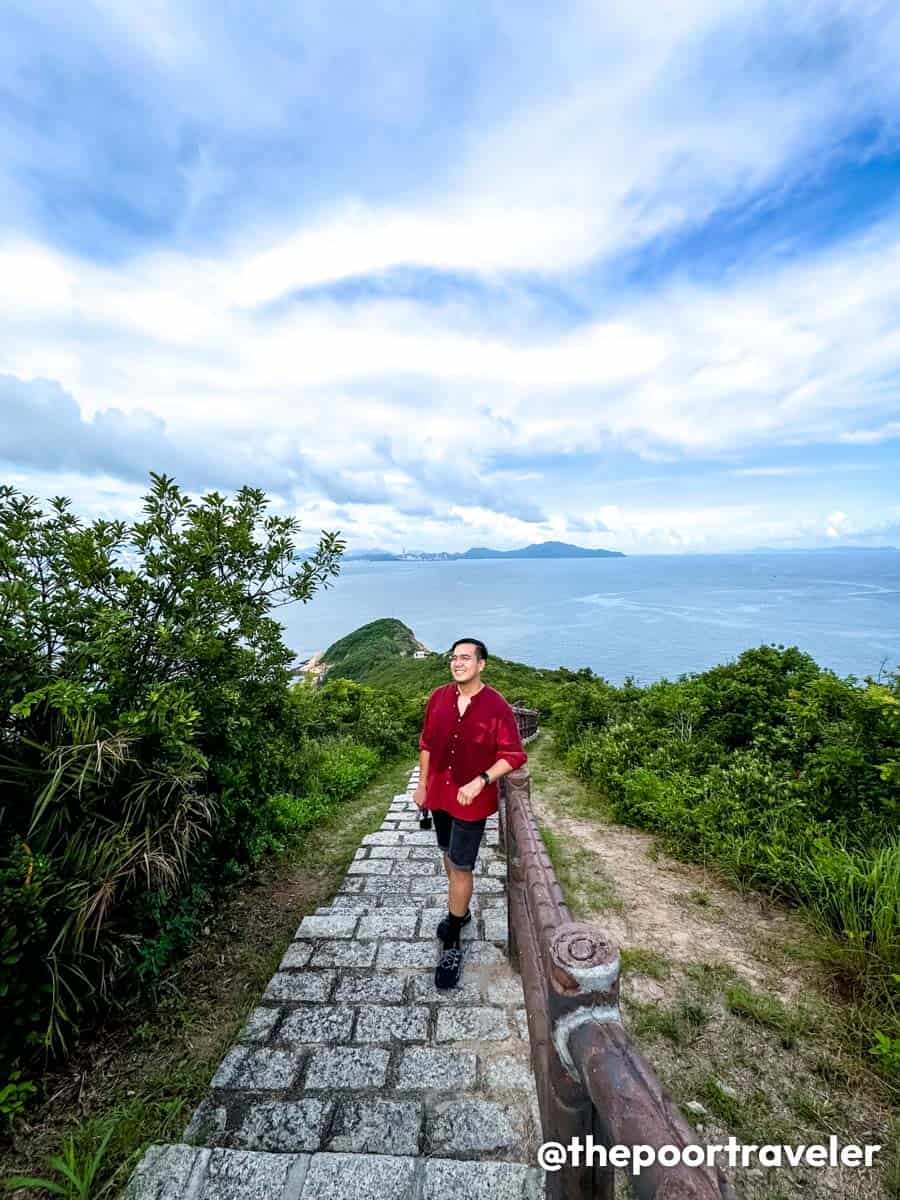
If you wish to go off the beaten path, another outer island that you might want to include in your itinerary is Cheung Chau, south of Lantau Island.
With an area of 3 square kilometers, Cheung Chau is bone-shaped, which looks like two separate islands connected by a narrow beach-laced strip of settlement. Among Hong Kong locals who wish to escape the constant jolt of the city, it is known for its hiking trails and relaxing beaches.
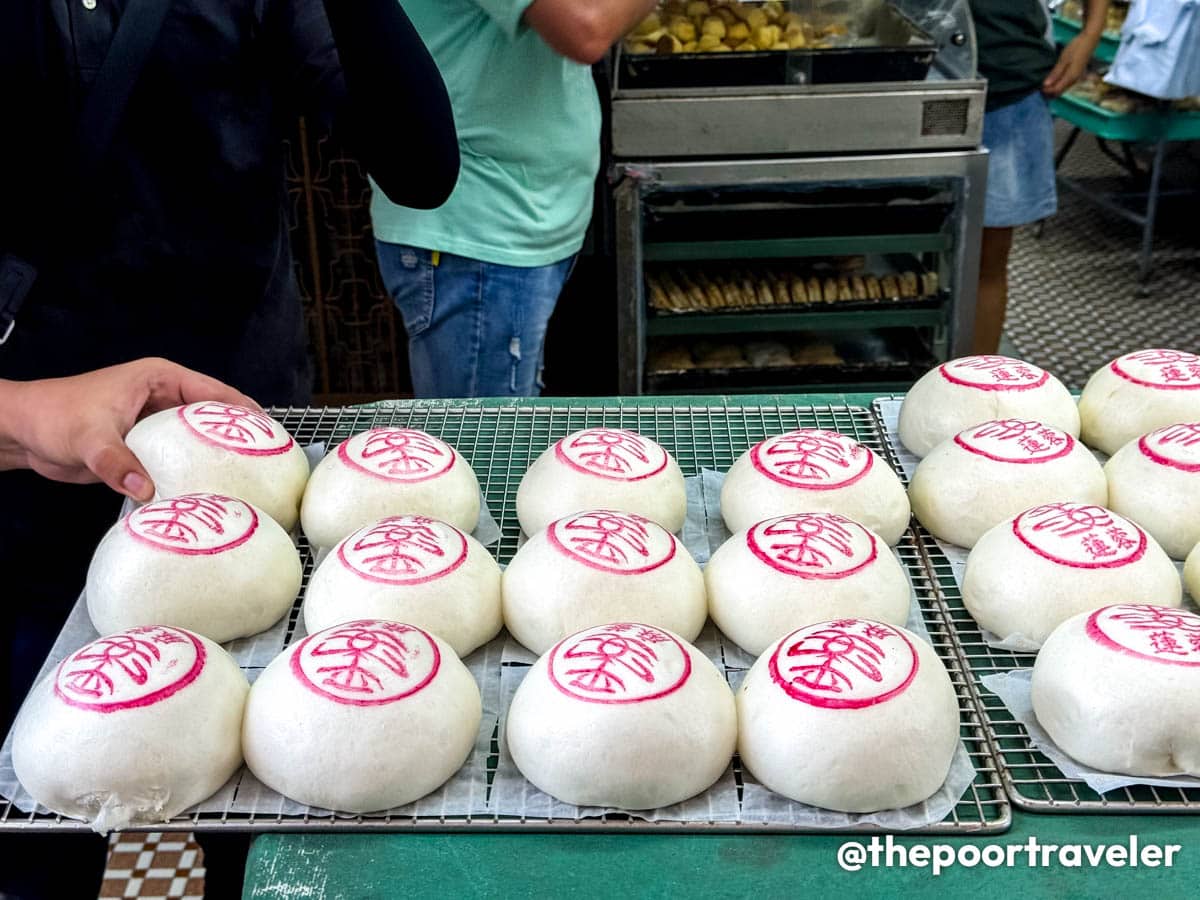
On our day trip in Cheng Chau, we were able to visit the following:
- Cheung Chau Family Walk and Pak She Praya Road, two connected waterfront walkways close to the main pier that are lined with countless seafood restaurants with outdoor seating so you could also admire the view from the promenade while indulging in fresh and delicious ocean bounty. Most establishments offer Cantonese cuisine but Indian, Thai, and other international options are available albeit limited.
- Pak She Street, another narrow alley that is flanked with intriguing establishments, from IG-worthy cafes and tea houses to handmade souvenir stores. One of the most popular shops here is Guo Jinji Bakery, which serves so-called “lucky buns” with sweet red bean or sesame paste fillings. The island’s Cheung Chau Bun Festival are held every year in May in honor of these signature lucky buns. We got to sample it because it’s sold here at Guo Jinji and other bakeshops any time of the year.
- Yuk Hui Temple, also known as Pak Tai Temple, was completed in 1783, which places it among the oldest Taoist temples in Hong Kong. It was established for the worship of Pak Tai, one of the five forms of the highest deity in Taoism. During the Cheng Chau Bun Festival, this temple hosts the Bun Towers, which are three colossal 60-foot towers made of the island’s lucky buns. Islanders would then try to climb the tower and snatch the buns on top. Locals believe that the higher the buns they collect, the greater the fortune that the future will hold for them.
- Cheung Chau Observation Deck (aka North Lookout Pavilion), which crowns a hill and marks the end of a short but rather exhausting walking trail that starts at Pak Tai Temple. The entirety of the trail is paved, bookmarked by steep sets stairs, so it is still generally easy but not for those with mobility issues. On top, a stunning view of the Cheung Chau and nearby islands await you. If you’re hiking in the summer, know that it’s much more challenging because of the heat. Bring water and a change of clothes.
- Cheung Chau Cinema Multicultural Park, with a historic 1931 edifice as its centerpiece. This pre-war cinema building is one of the longest preserved in Hong Kong. It’s no longer functional as a movie house, as it ceased commercial operations in 1997, but it still offers plenty of fun to this day. An open piazza hosts film screenings at night and musical performances on some days. The 1931 Studio also serves as a museum where you can learn more about filmmaking. Fruit stalls and souvenir shops also dot the vicinity.
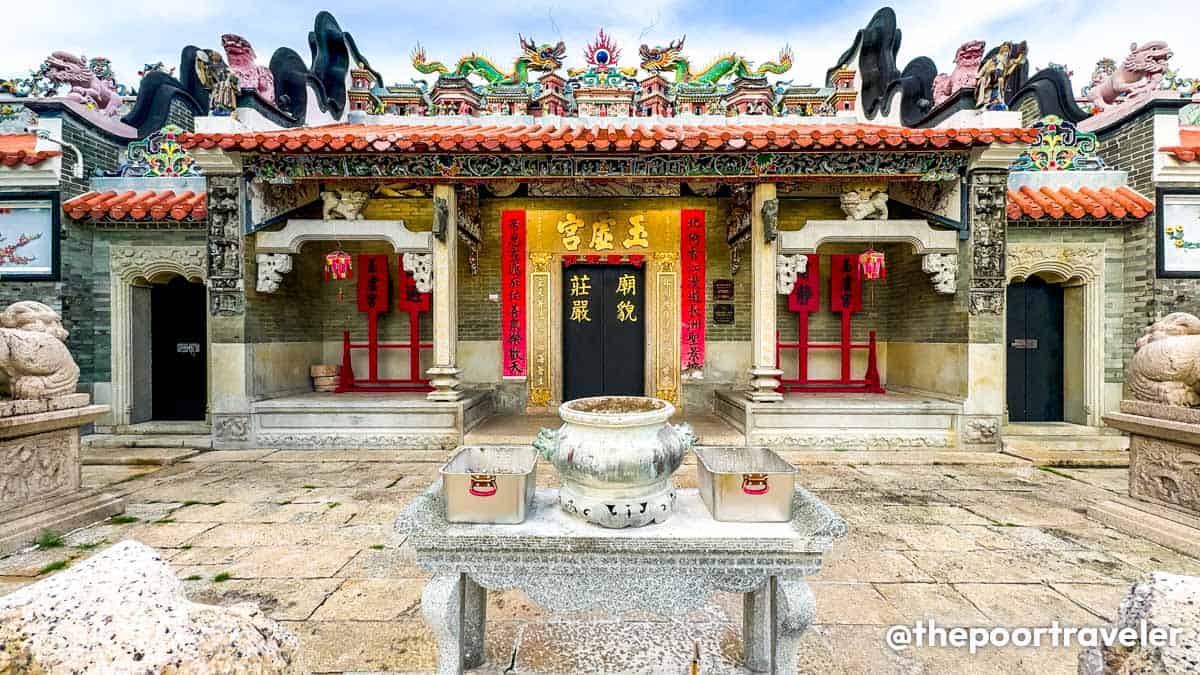
After a day of exploring, we came full circle at Cheung Chau Family Walk. And there’s no better way to end a tour than with a hearty dinner at So Bor Kee, a dai pai dong (eatery) that offers a wide selection of affordable but scrumptious seafood and meat dishes served family-style. Don’t miss its Sichuan boiled beef with plenty of chili peppers and fish skin mixed with peanuts and sesame seeds.
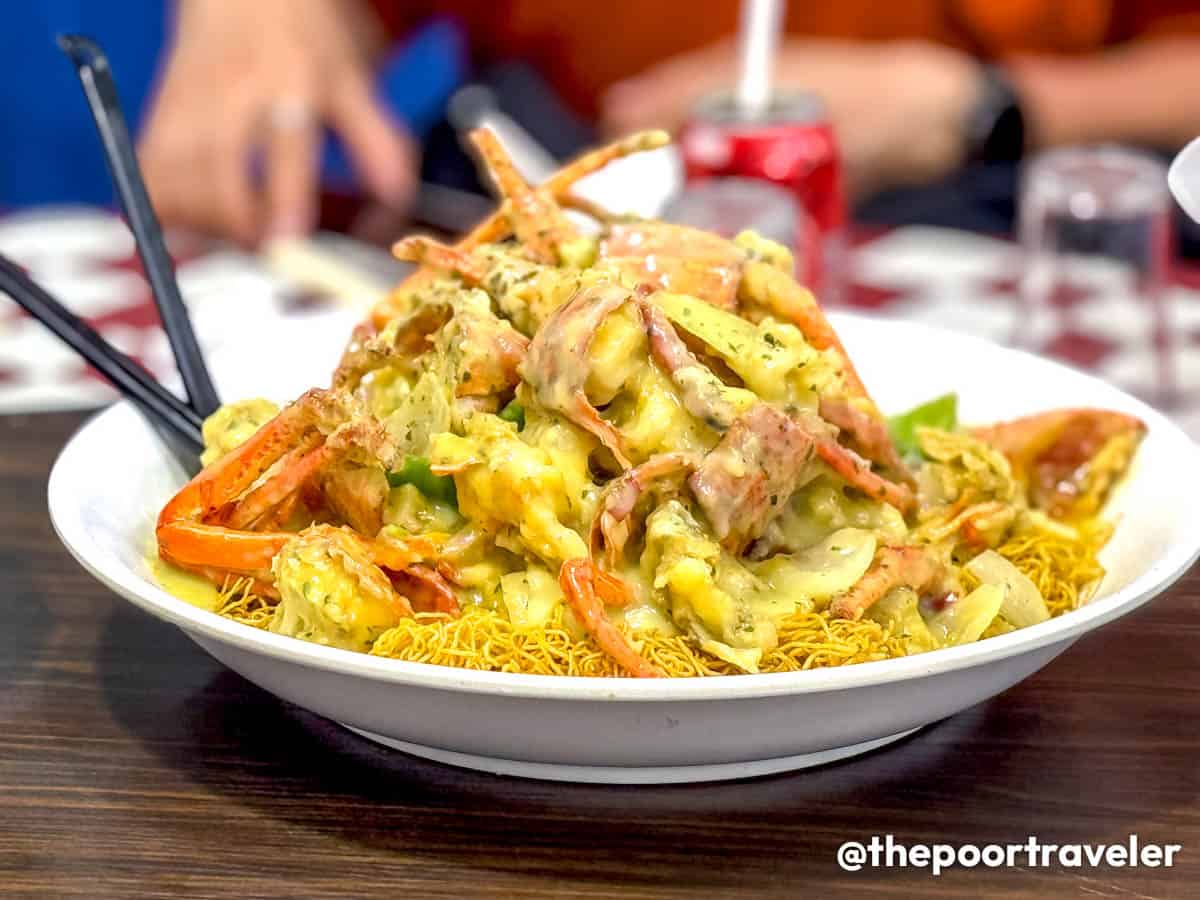
HOW TO GET TO CHEUNG CHAU
From Hong Kong city center: Take the MRT to Hong Kong Station and make your way to Central Pier No. 5. Catch a ferry to Cheung Chau. Travel time is 35-60 minutes, depending on the vessel. Fare: HK$ 14.80-42.30, depending on the vessel and day of the week. See schedule and more details here.
From Ngong Ping/Po Lin Monastery: It’s possible to visit the Big Buddha/Ngong Ping 360 and Cheung Chau on the same day. Just board Lantau Bus No. 2, which makes a stop at Mui Wo ferry pier. Then catch the inter-island ferry to Cheung Chau.
7. Aberdeen
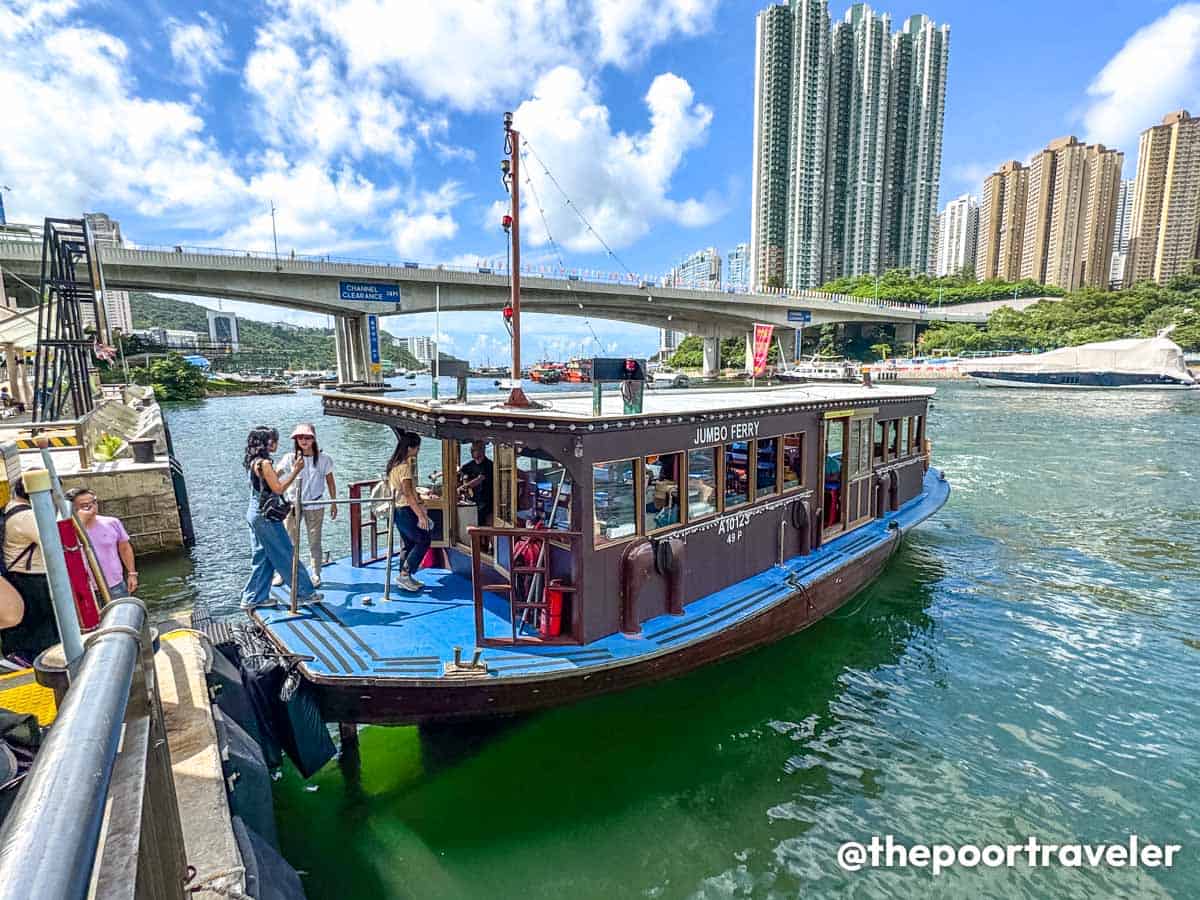
Aberdeen is a town on the southwestern coast of Hong Kong Island, best known for its floating village and restaurants. Historically, it’s been home to the Tanka people, who traditionally live and work in junk boats. But today, the Aberdeen Harbour is quite populated and developed, with high-rise buildings now dominating the landscape. That said, it is not as crowded or as popular among tourists as Central and other urban spots in Hong Kong.
One of the best ways to get acquainted with Aberdeen is by joining a boat tour. From the Aberdeen Promenade, you can board a tour boat and learn more about the town along the way and admire key attractions from afar like the Tai Pak Floating Seafood Restaurant and the Water World Ocean Park.
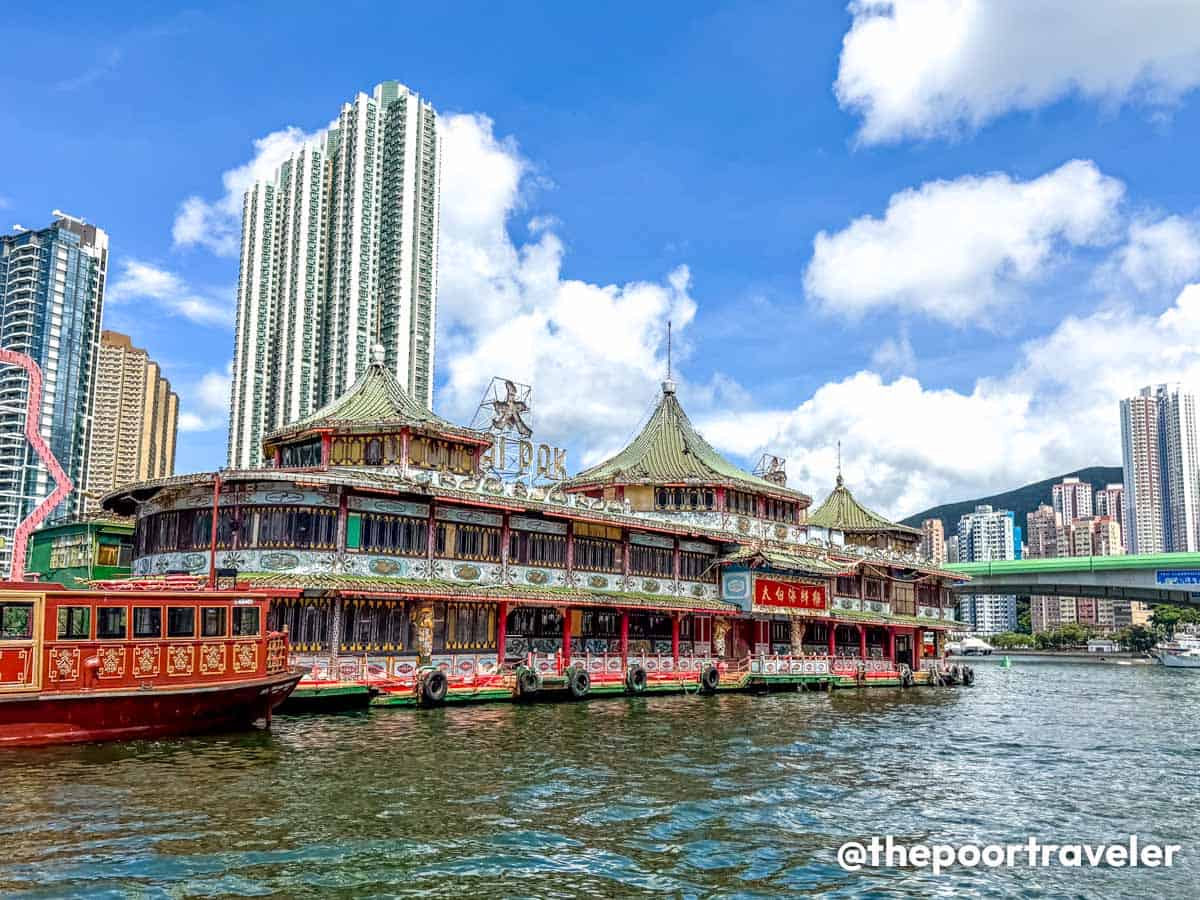
At one point, you’ll make a stop at the Aberdeen Houseboat, a floating museum that showcases its history and its community’s way of life. The tour usually lasts 60 to 90 minutes, with another stop at a floating souvenir shop towards the end.
How to get to Aberdeen Pier (for Fishing Village Tour): Take the MTR to Lei Tung Station, which is on the South Island Line. Take Exit A1 and walk along Wah Ting Street until you reach the harbor. Turn right and continue walking to Hung Shing Temple. The pier is just right around the corner.
8. Sham Shui Po
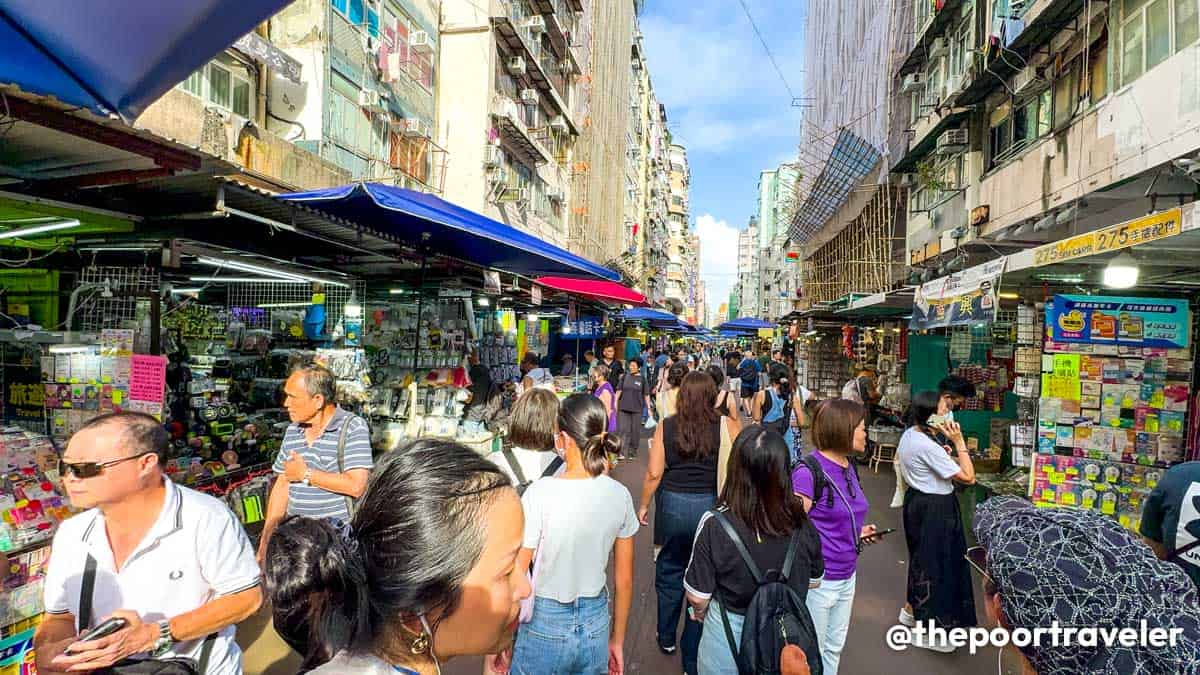
On Hong Kong’s Kowloon side, most tourists only get to explore Tsim Sha Tsui, Yau Ma Tei, and Mong Kok. But north of Mong Kok lies Sham Shui Po, which is brimming with compelling attractions on its own.
So what’s the best way to get to know Sham Shui Po? By joing a walking tour led by a guide, who can share meaningful insider insights about each attraction. Our tour was led by Miranda, a Sham Shui Po local. Some of the stops along the way include:
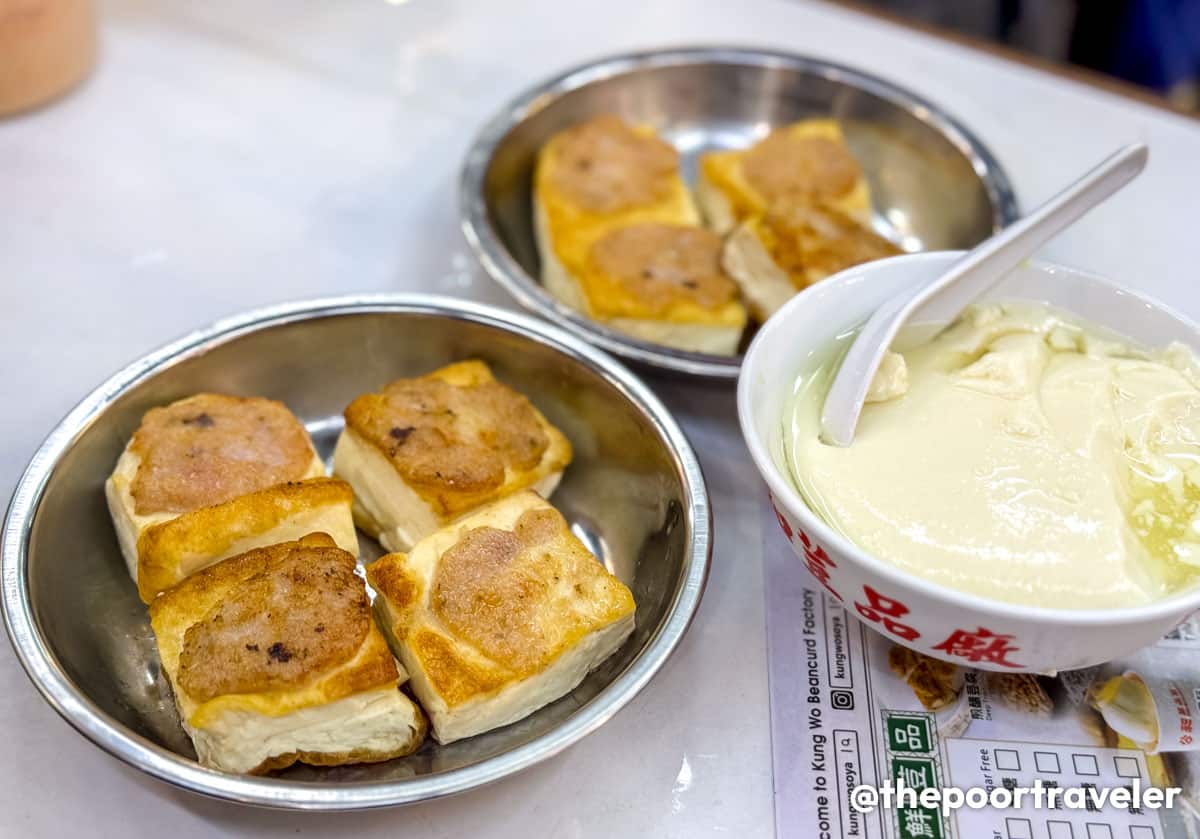
- Kung Wo Beancurd Factory, a Michelin Bib Gourmand awardee that has been operating in the area since 1960, selling out a thousand bowls of its signature tofu fa or beancurd pudding a day. The silky tofu is drowned in cane sugar water, but feel free to sprinkle extra brown sugar on top. It costs HK$12-14 per bowl. We also got to try its deep-fried tofu, topped with a thin slice of seasoned pork, which costs HK$14 per serving.
- Apliu Street Flea Market, which is a hotspot for gadgets and other electronic items including laptops, mobile phones, and accessories. You’ll also find appliances and souvenirs. But some pay a visit here to empty a bowl of snake soup, which is a popular winter delicacy among locals. It’s definitely not for me, though.
- Fuk Wing Street, aka Toy Street because it’s flanked mostly by dozens of stores selling children’s toys and accessories.
- Yu Chau Street, aka Bead Street, because it’s where you should go if you’re looking for beads, buttons, and other sewing supplies. It’s also punctuated by costume and jewelry stores.
- Sam Tai Tsz Temple and Pak Tai Temple, two historic temples in one complex. Both are housed in heritage buildings. The former was built in 1898 by Hakka residents as a tribute to the deity Sam Tai Tsz (also known as Na Cha in other places) for saving Sham Shui Po from a plague outbreak. It is the only temple in Hong Kong dedicated to Sam Tai Tsz. The latter was built in 1920 by fishermen to worship Pak Tai (the North deity that is also honored at Cheng Chau’s Yuk Hui Temple).
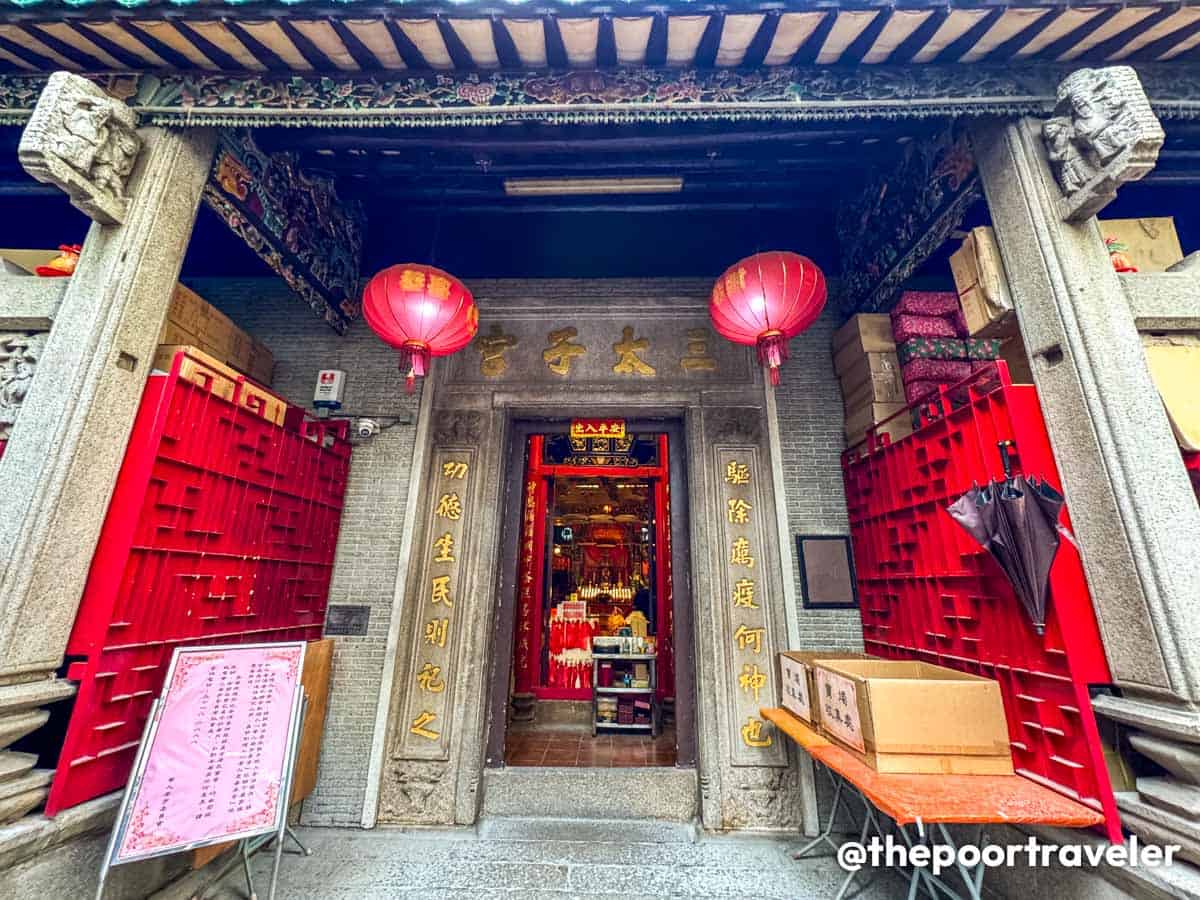
Outside of the tour, we were also able to visit the Jockey Club Creative Arts Centre (JCCAC), which was originally built in 1977 as a complex of tiny family-run factories but was transformed into an artist village.
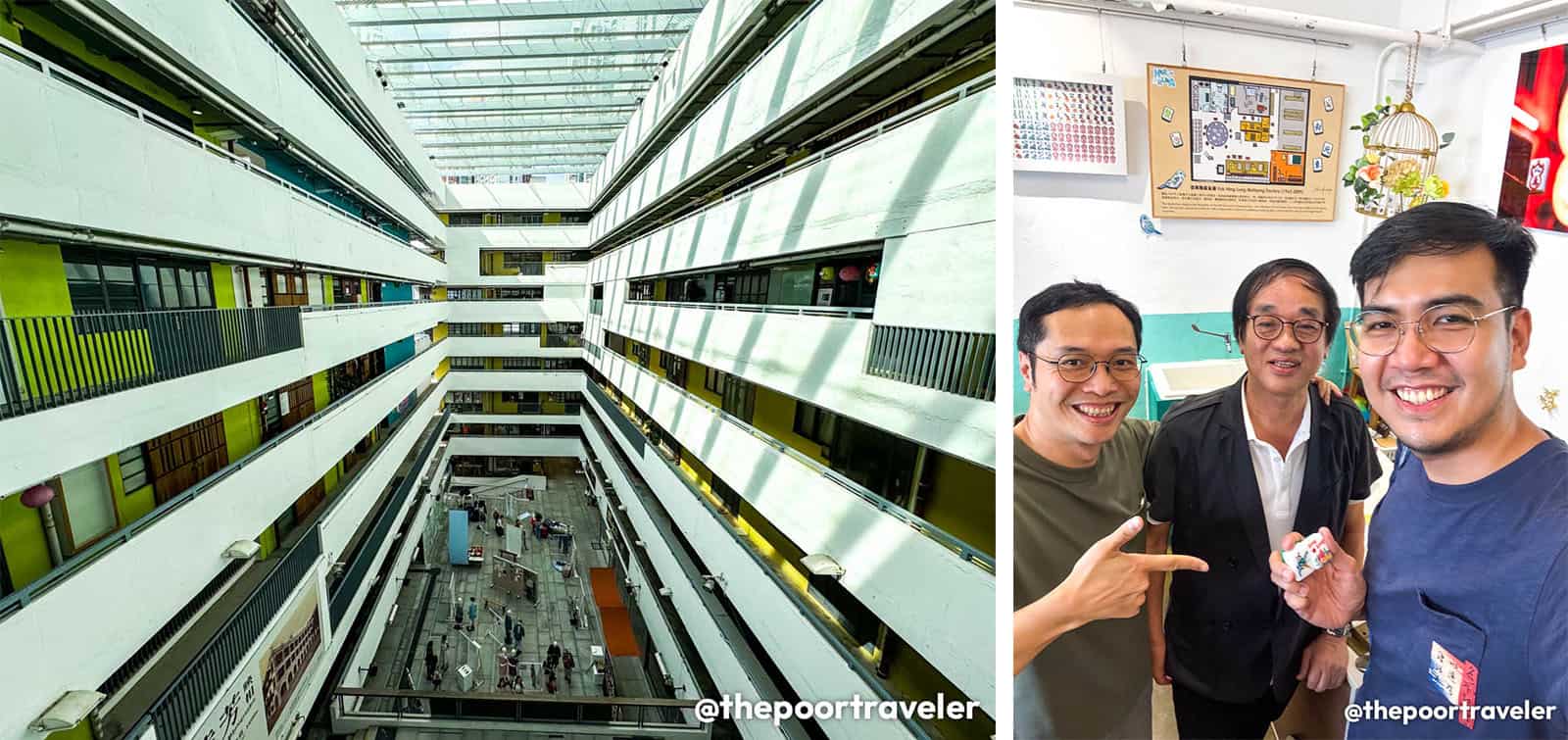
We also got to dine at Tai Ping Koon. Established in 1860, it is regarded by the South China Morning Post as “one of the oldest continually operating Chinese restaurants in the world” and by CNN as “the very first Chinese-owned Western restaurant in China”. It specializes in roasted pigeon, which is best eaten by hand, without utensils.
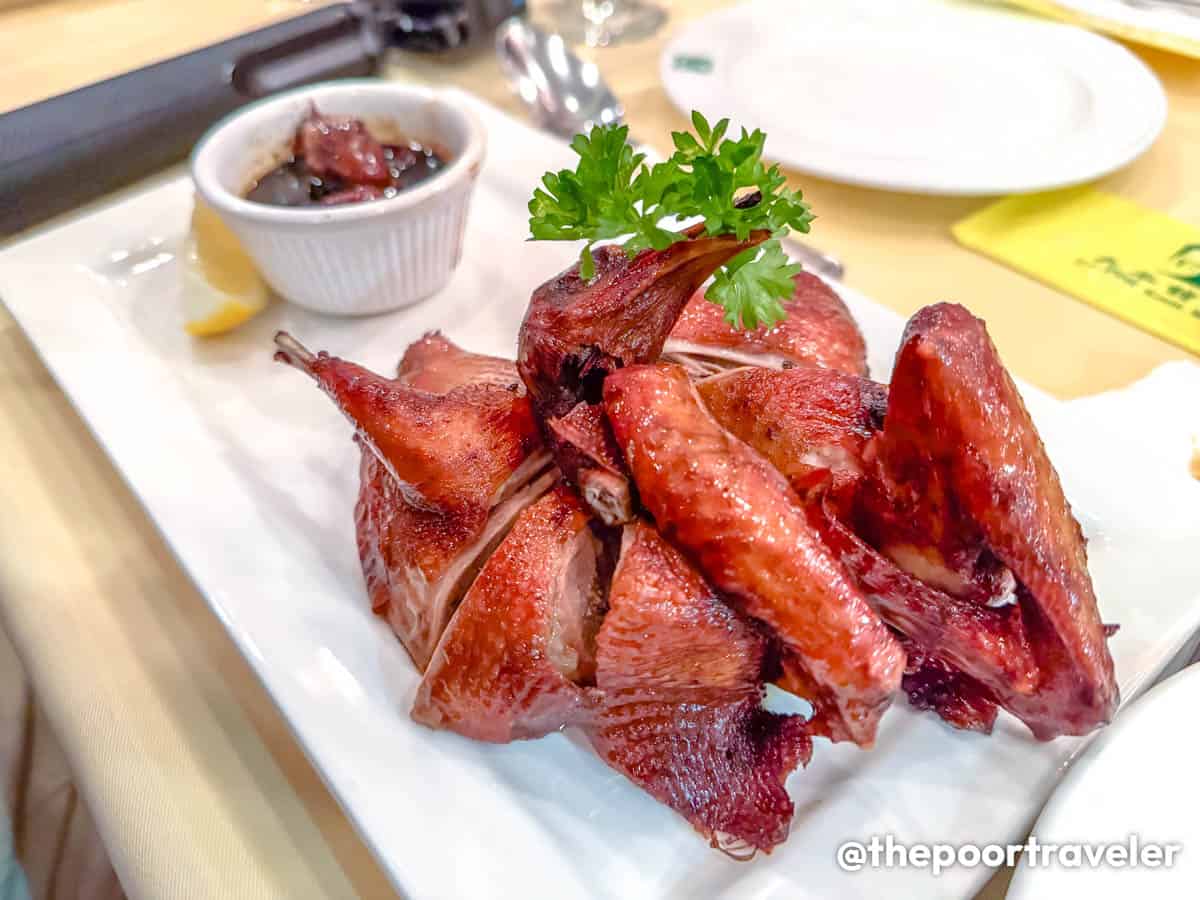
How to get to Sham Shui Po: Take the MTR to Sham Shui Po Station (on Tsuen Wan Line). Most attractions are within walking distance from the MTR Station.
9. Nan Lian Garden and Chi Lin Nunnery
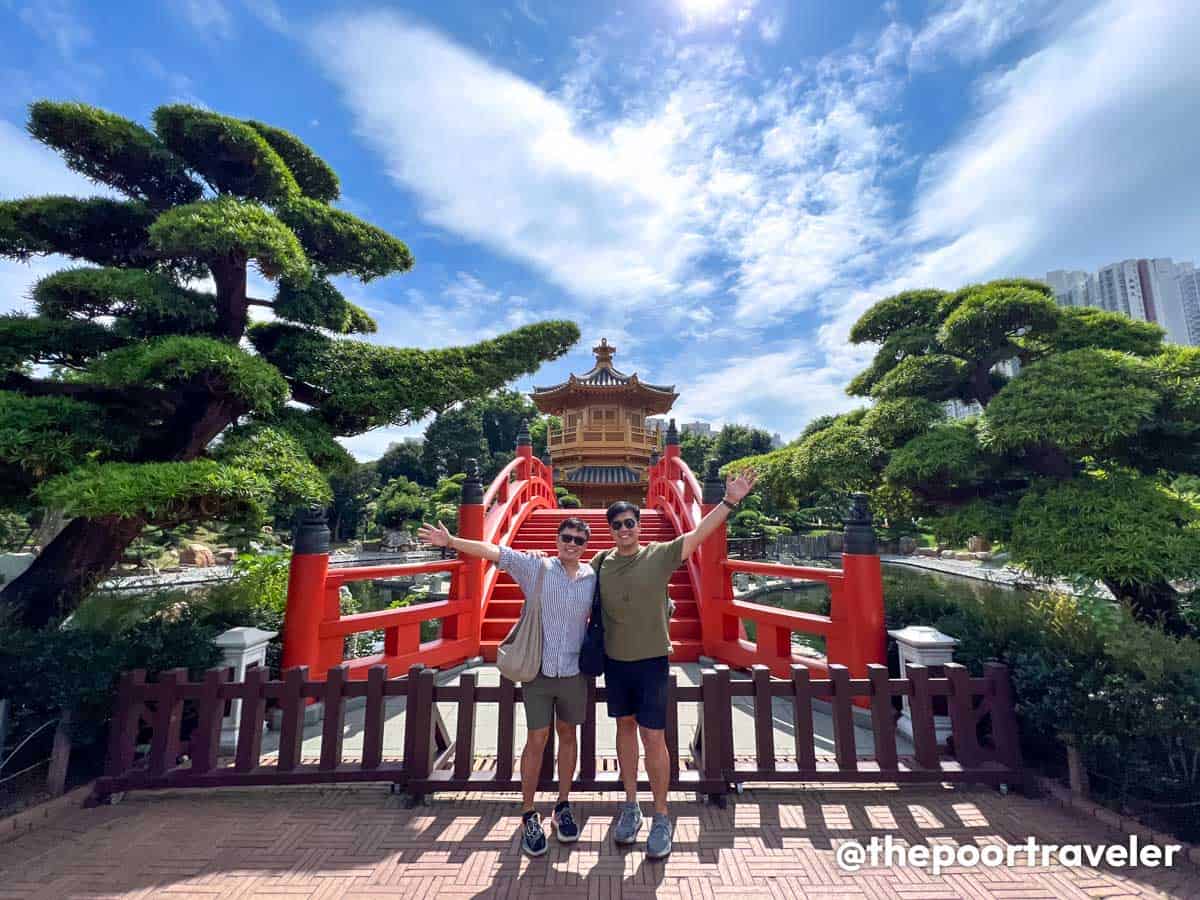
On a separate occasion, we were also able to drop by Nan Lian Garden, a peaceful 3.5-hectare oasis in the middle of the vast urban jungle that is Kowloon.
The garden is designed in classical Tang dynasty fashion. It is adorned with manicured trees surrounding the tranquil “Blue Pond” that is straddled by a vermillion bridge that leads to a small pagoda called the “Pavilion of Absolute Perfection”.
Inside its buildings are various exhibits including the Chinese Timber Architecture Gallery, which showcases the traditional way of building timber houses during the Tang dynasty.
The garden is situated just next to Chi Lin Nunnery, so keep quiet within the vicinity. Big group photos are also prohibited inside.
NAN LIAN GARDEN
Operating hours: 7:00 AM – 9:00 PM, but the exhibits are open from 10:00 AM to 5:00 PM.
Entrance fee: FREE of charge.
How to get to Nan Lian Garden: Take the MTR Tuen Ma Line to Diamond Hill Station. Entrance to the Nan Lian Garden is roughly 350 meters from here (about 4-minute walk).
10. Sheung Wan
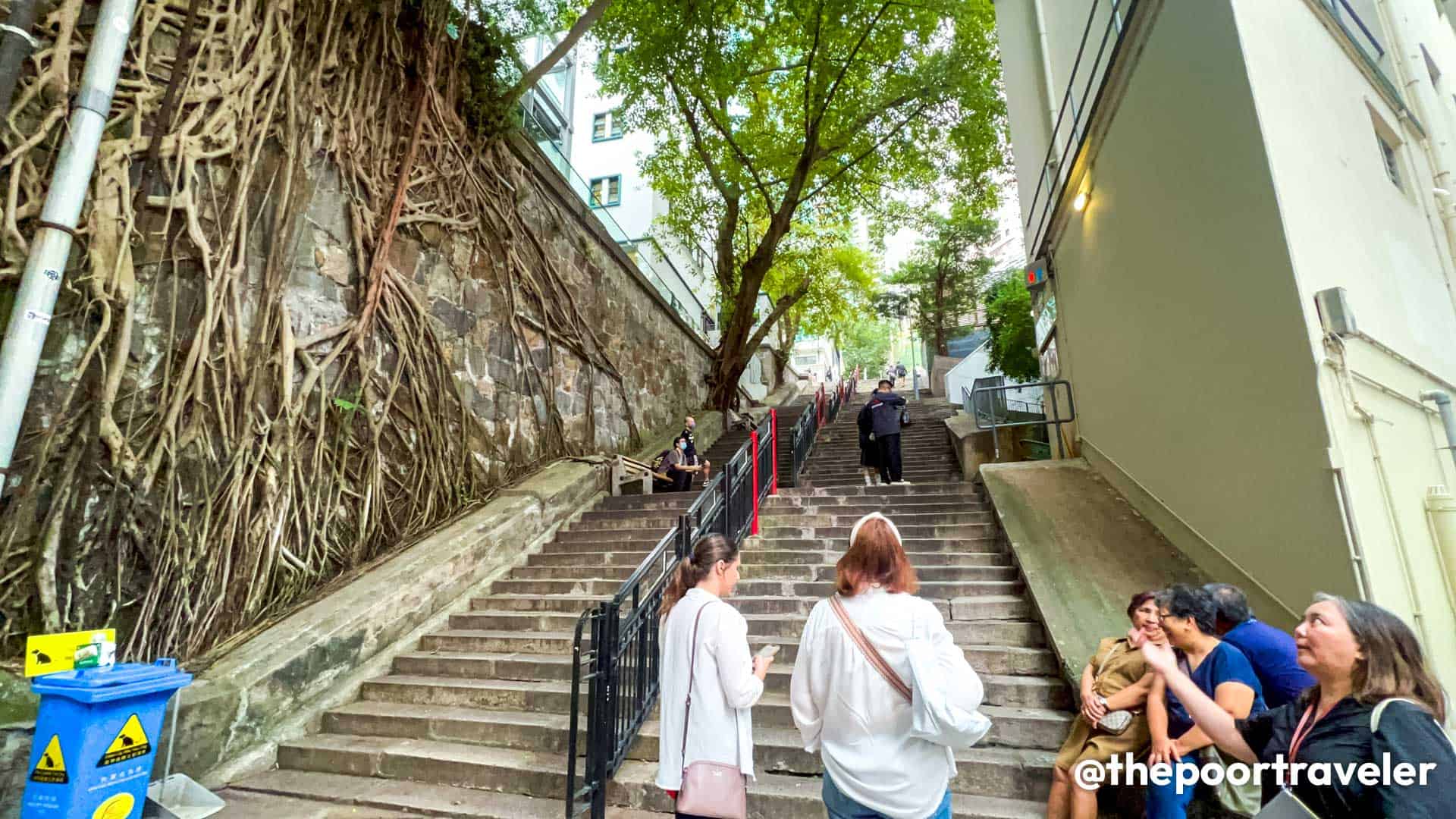
On paper, Sheung Wan should be pretty touristy given that it lies within spitting distance from Central. But in reality most travelers visiting Central stay within its confines and rarely wander off to neighboring Sheung Wan.
Sheung Wan is one of my favorite areas to stay in Hong Kong. Aside from its close proximity to Central, its map is dotted with a number of interesting sites like the Man Mo Temple, built over 160 years ago in honor of Man (Man Cheong), the God of Literature, and Mo (Kwan Tai), the God of War. These two deities are the patrons of scholars, so historically, students who wish to pass exams or do better in studies pray to them.
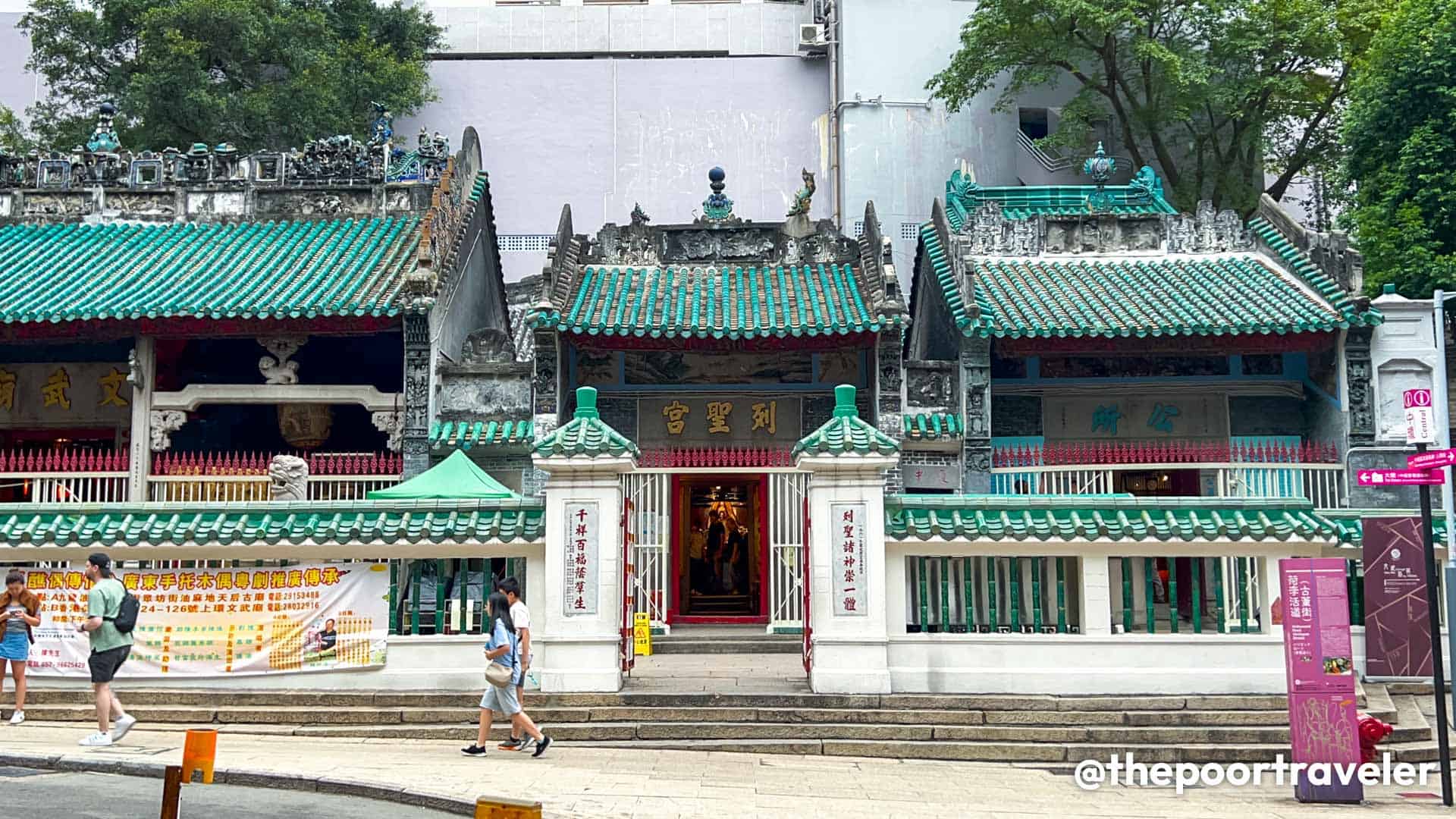
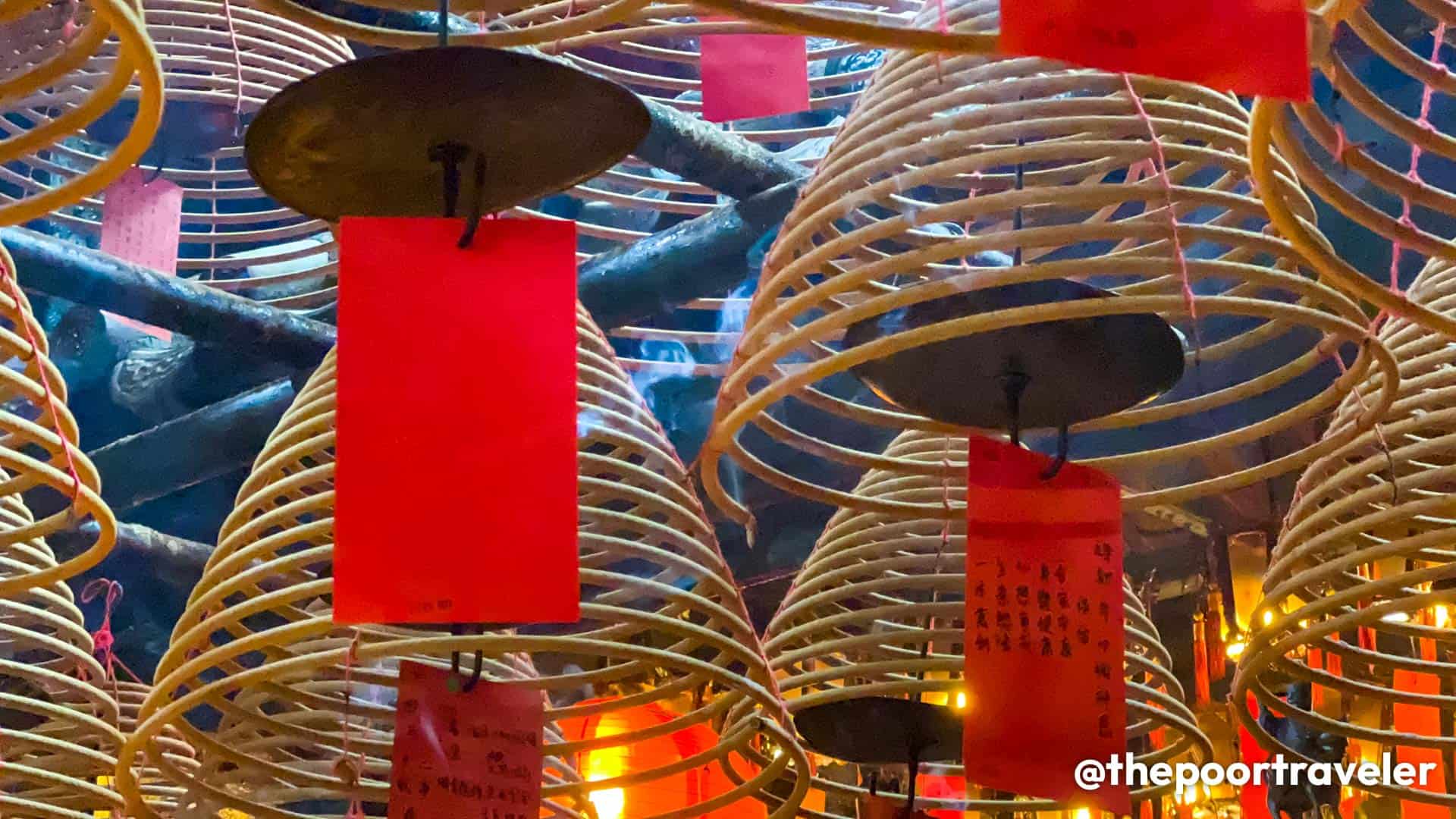
Hong Kong harbors numerous Man Mo temples, but the one in Sheung Wan is by far the largest. It was also declared a historic building and monument.
Sheung Wan is also a foodie’s paradise. A stroll here will let you discover restaurants and eateries that are mostly frequented by residents. One of these is Lin Heung Kui, best known for its dimsum at lunch, but they also serve killer roasted meats like duck and soy chicken.
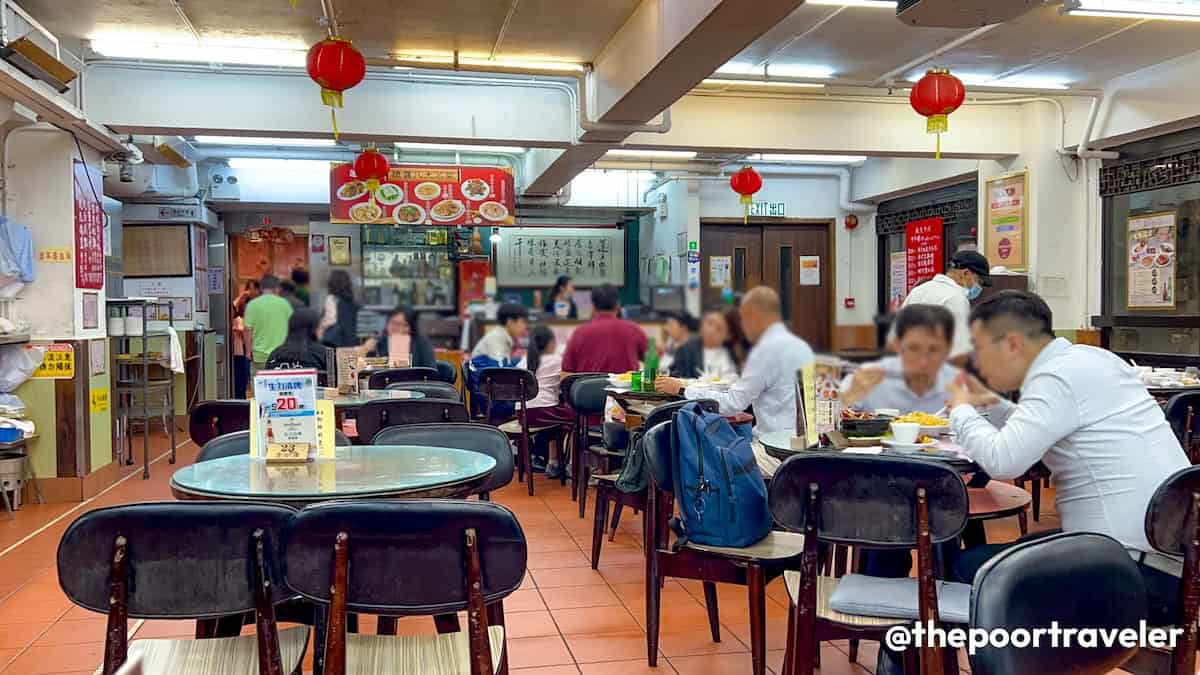
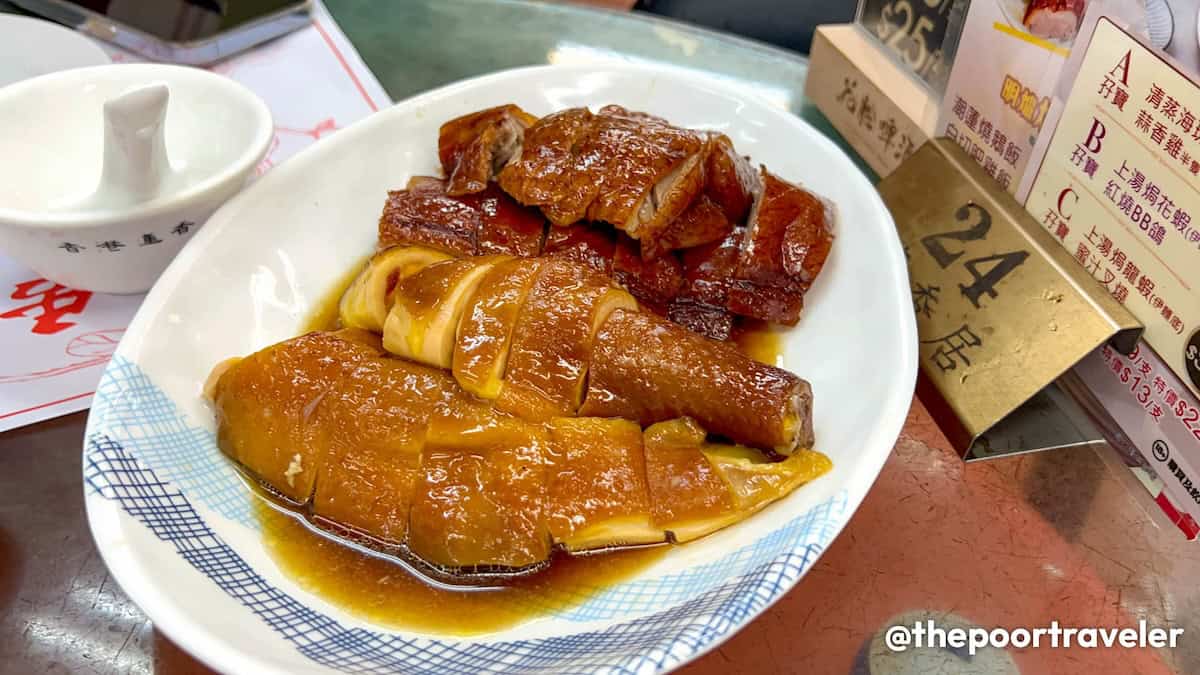
We also got to try Samsen, a rather pricey but worth-it resto serving delectable Thai favorites. We also joined a guided Sheung Wan Food Tour last year!
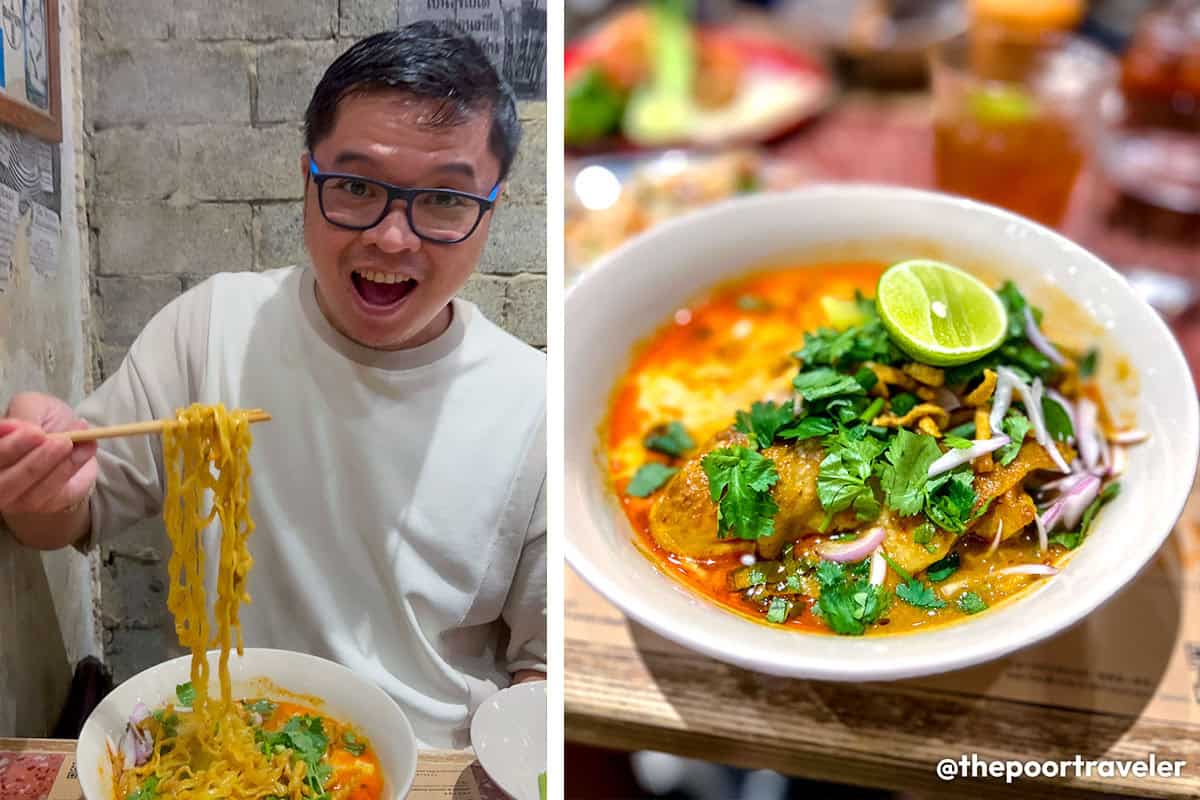
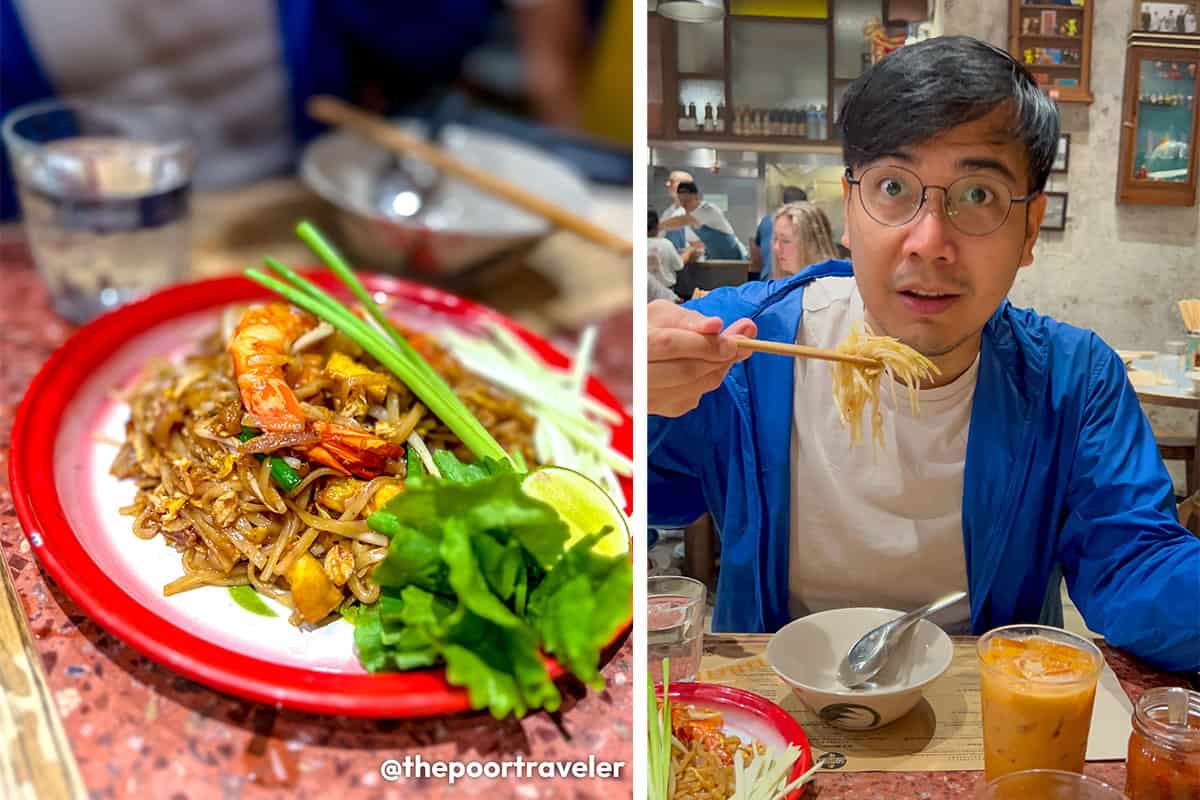
A big stretch of the Dr. Sun Yat Sen Historical Trail, which extends from the University of Hong Kong all the way to Central, also passes through Sheung Wan. By seeking the 16 plaque-marked stops along the walking trail, you’ll get to learn more about the life of the historical revolutionary, particularly his time and education in Hong Kong.
How to get to Sheung Wan: Take the MTR Island Line to Sheung Wan Station. Most points of interest can be reached on foot from this MTR station.
